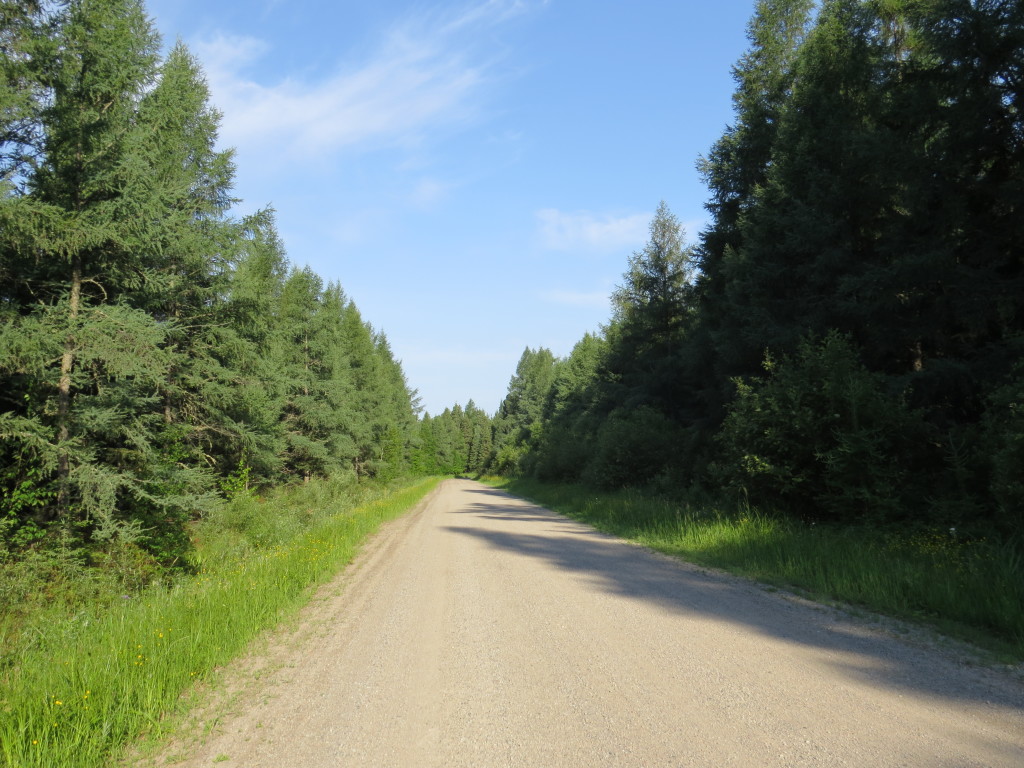 Northern Minnesota is home. Every season offers up something special in terms of wildlife and scenery. I was able to get out and do some birding in the forests, bogs, and open country on the same recent trip that included the Blackburnian Warbler. Cool stuff abounds everywhere here. It was good to be home.
Northern Minnesota is home. Every season offers up something special in terms of wildlife and scenery. I was able to get out and do some birding in the forests, bogs, and open country on the same recent trip that included the Blackburnian Warbler. Cool stuff abounds everywhere here. It was good to be home.
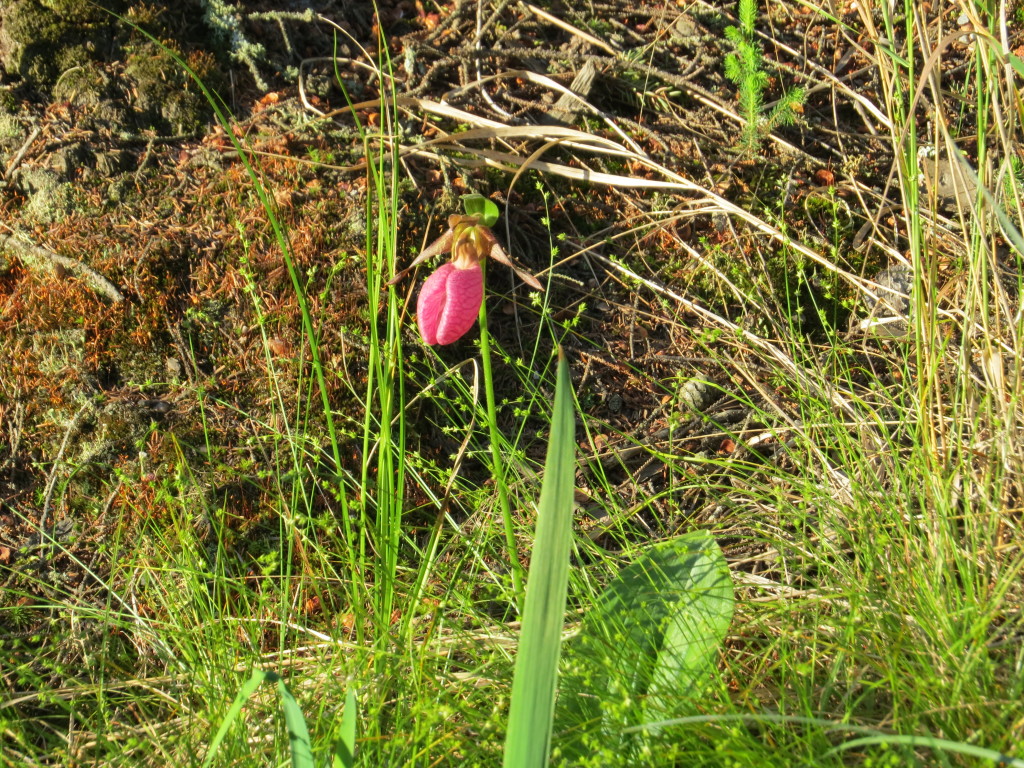
Pink Lady Slipper (Not MN’s State Flower, the Showy Lady Slipper)
Tamarack bogs like the one pictured above get a lot of attention from birders in the winter because of the Owls and some other boreal specialties. In the summer, though, they are not visited by birders as much. It’s too bad because they are quite lush and beautiful and the polar opposite of the forests of the seemingly dead Tamaracks. I say seemingly because Tamaracks drop their needles after turning a beautiful golden yellow in the fall, leaving dead-looking trunks and branches.
This particular bog was home to the Blackburnian Warbler I showcased in the last post, but there were also some other fun birds in this area. The Blackburnian was a happy accident; I had actually gone to this spot to look for some Boreal Chickadees that local birder Julie Grahn had told me about. I found them, and they were literally sharing turf with the Blackburnian. They were not as cooperative though, refusing to come out of the Spruce tops.
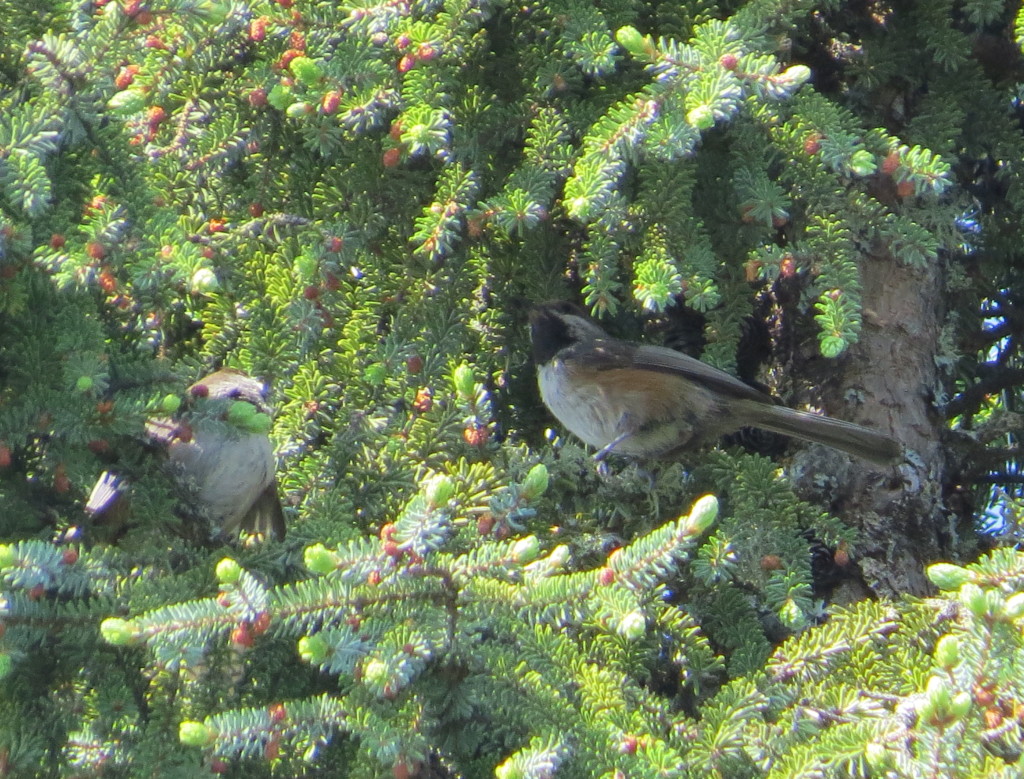 Judging from my picture, it appears that this was a family group with a couple fledglings! This Chickadee is so cool. Most MN birders only see them in the dead of winter when they come out to the remote feeding station on Admiral Road in the Sax-Zim Bog. I was very pleased to see BOCH in the summer and much closer to home than SZ.
Judging from my picture, it appears that this was a family group with a couple fledglings! This Chickadee is so cool. Most MN birders only see them in the dead of winter when they come out to the remote feeding station on Admiral Road in the Sax-Zim Bog. I was very pleased to see BOCH in the summer and much closer to home than SZ.
Sharing space with the Boreal Chickadees and Blackburnian Warbler were numerous Nashville Warblers whose song I just learned. I am now just starting to learn the songs of the more common Warblers that I see during migration. I tend to photograph common birds last too, so on this day I finally got some shots of the Nashville.
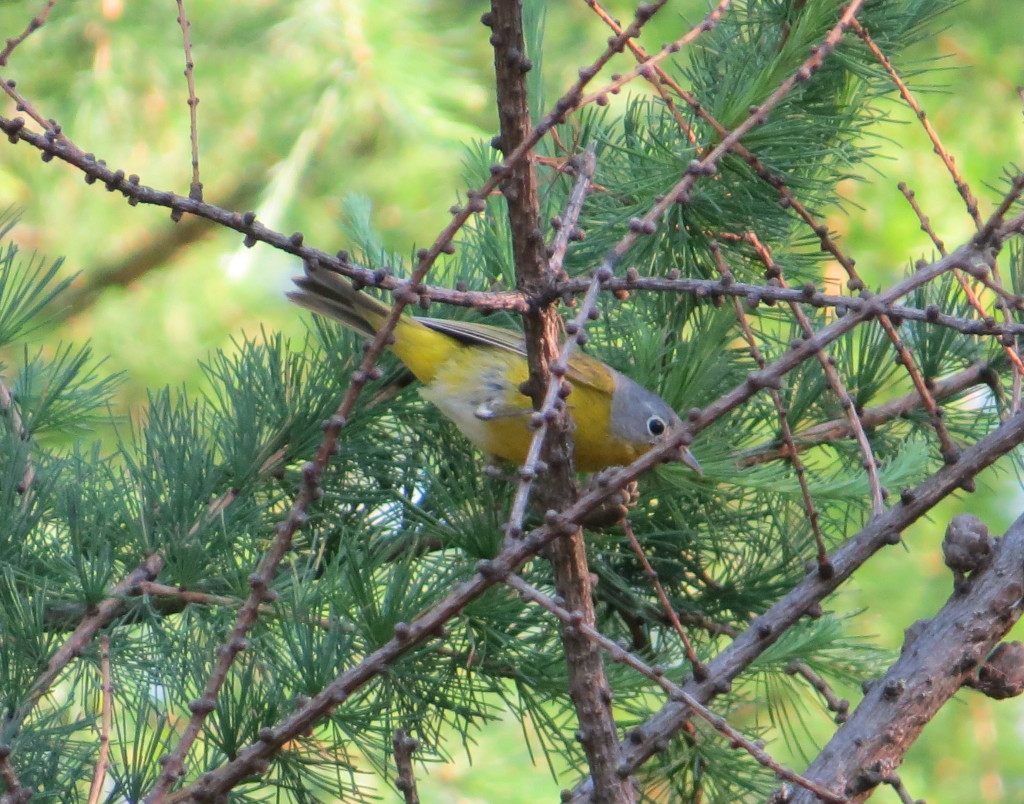
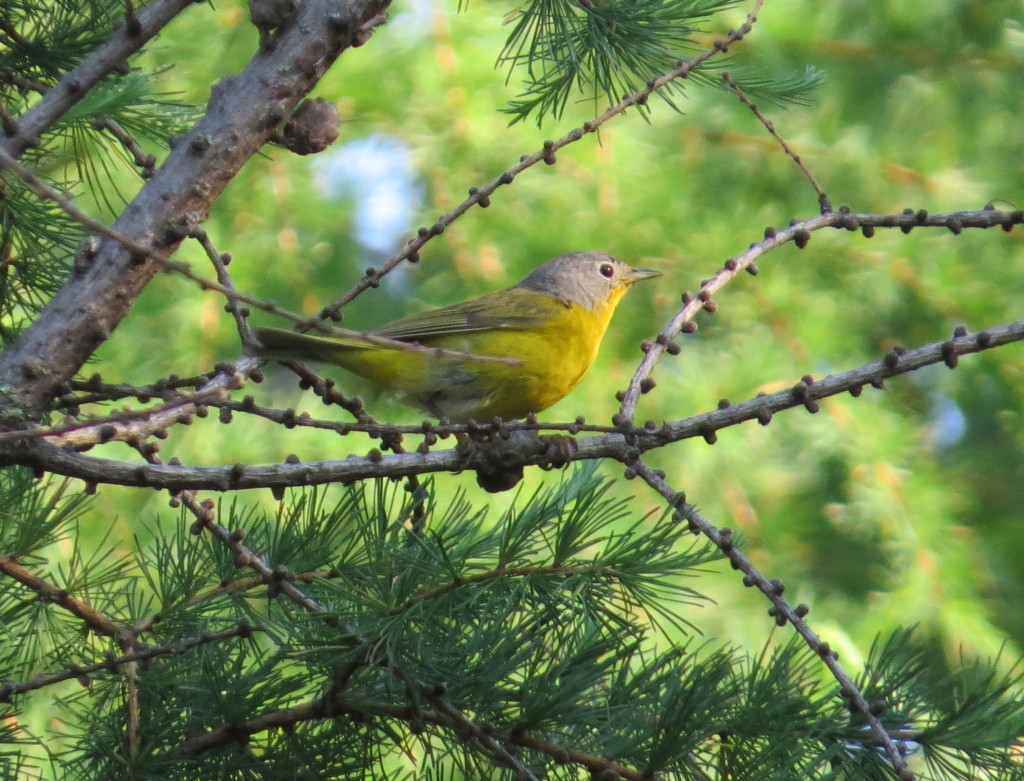 Another fun bird to see even if it couldn’t be seen well was the Lincoln’s Sparrow.
Another fun bird to see even if it couldn’t be seen well was the Lincoln’s Sparrow.
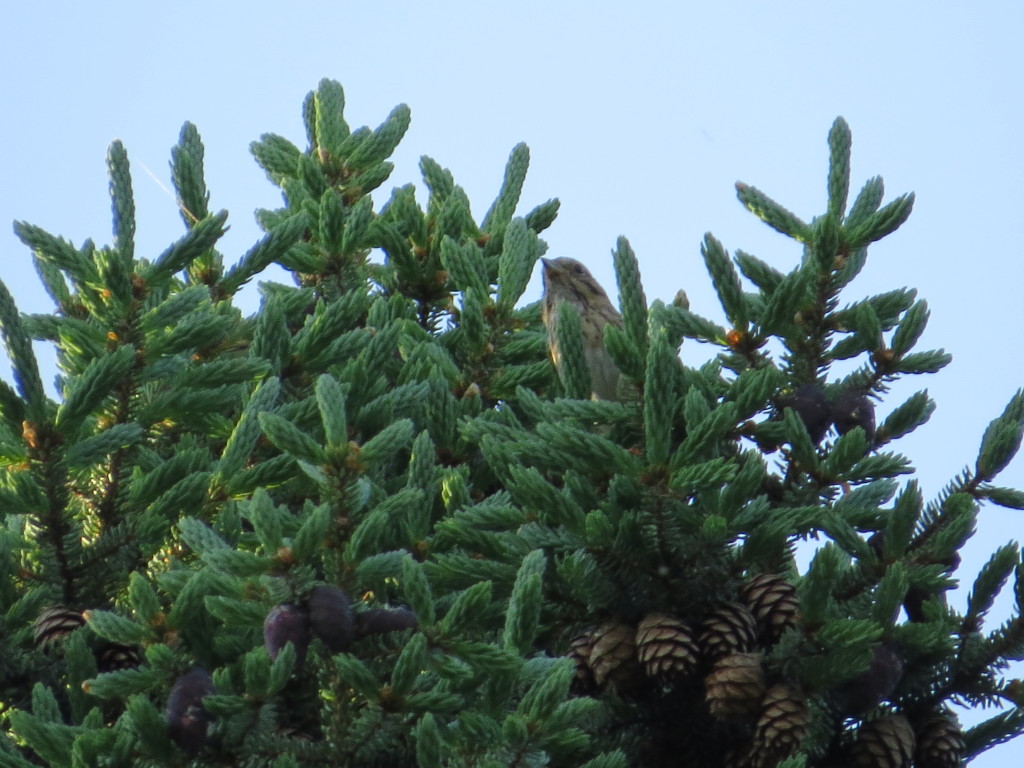 The varied habitats in northern MN offer up some unique opportunities for viewing wildlife. While looking for an American Bittern lifer in a marsh near my parents’ house, I found this gal looking for a place to lay her eggs.
The varied habitats in northern MN offer up some unique opportunities for viewing wildlife. While looking for an American Bittern lifer in a marsh near my parents’ house, I found this gal looking for a place to lay her eggs.
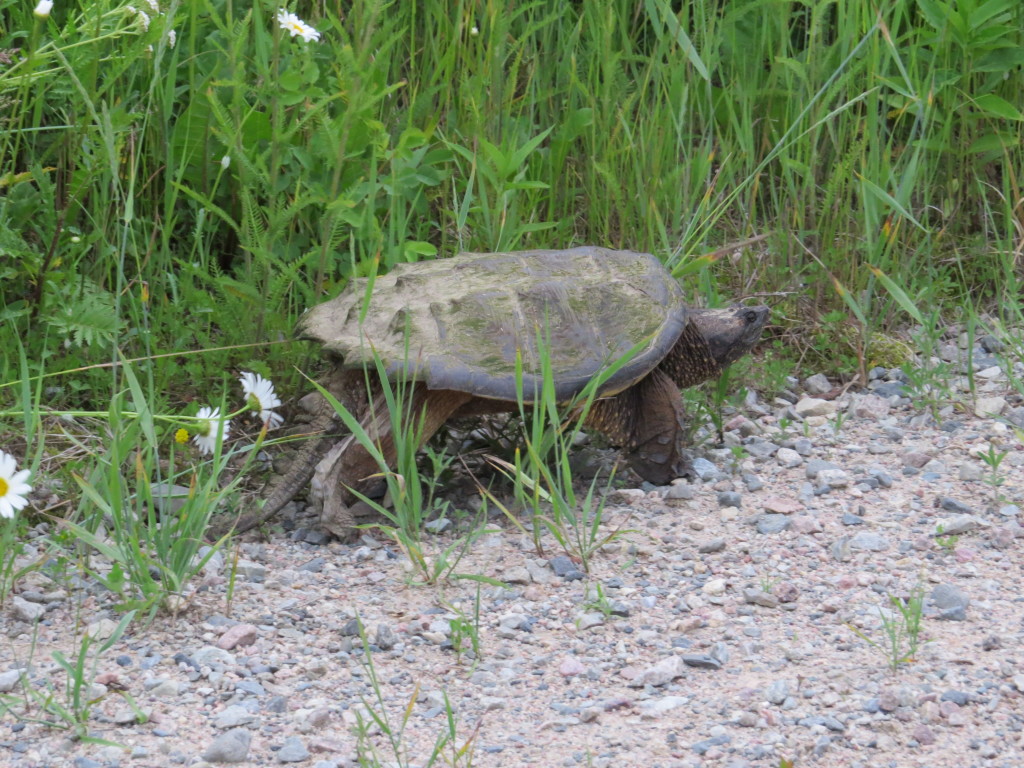 It was not the biggest Snapper I’ve seen. This one’s shell was the size of a dinner plate. I’ve seen them twice as big before.
It was not the biggest Snapper I’ve seen. This one’s shell was the size of a dinner plate. I’ve seen them twice as big before.
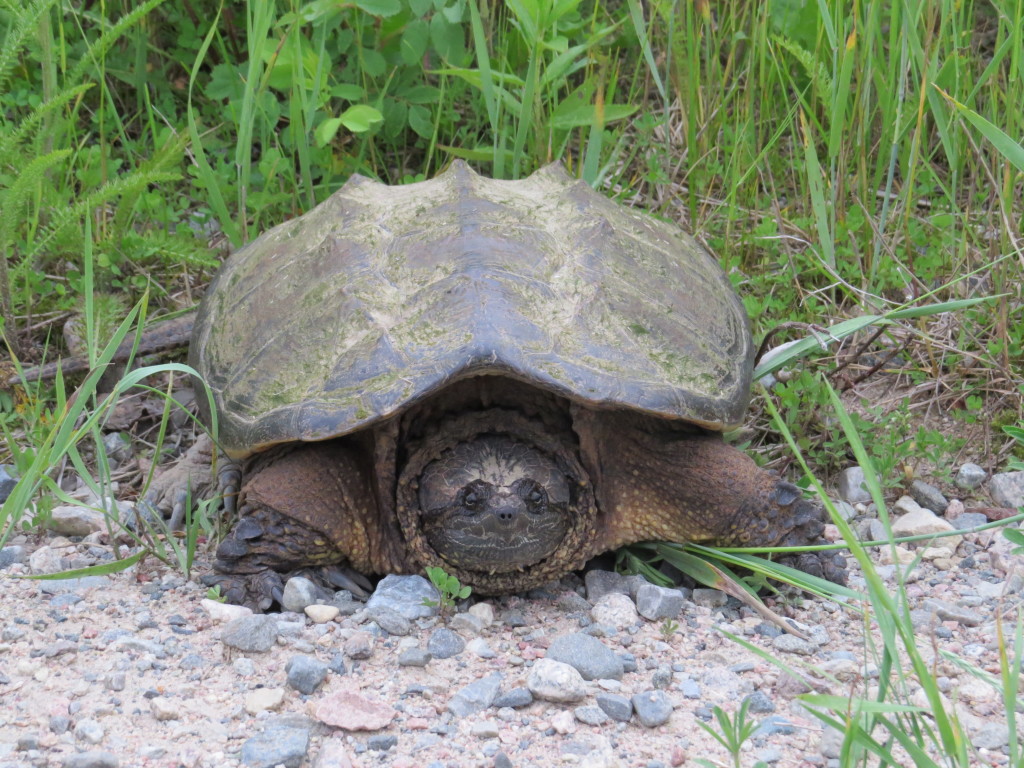 I didn’t spend a lot of time in the mature, upland woods other than just passing through. That was enough to nab my FOY Blue-headed Vireo that I missed during migration.
I didn’t spend a lot of time in the mature, upland woods other than just passing through. That was enough to nab my FOY Blue-headed Vireo that I missed during migration.
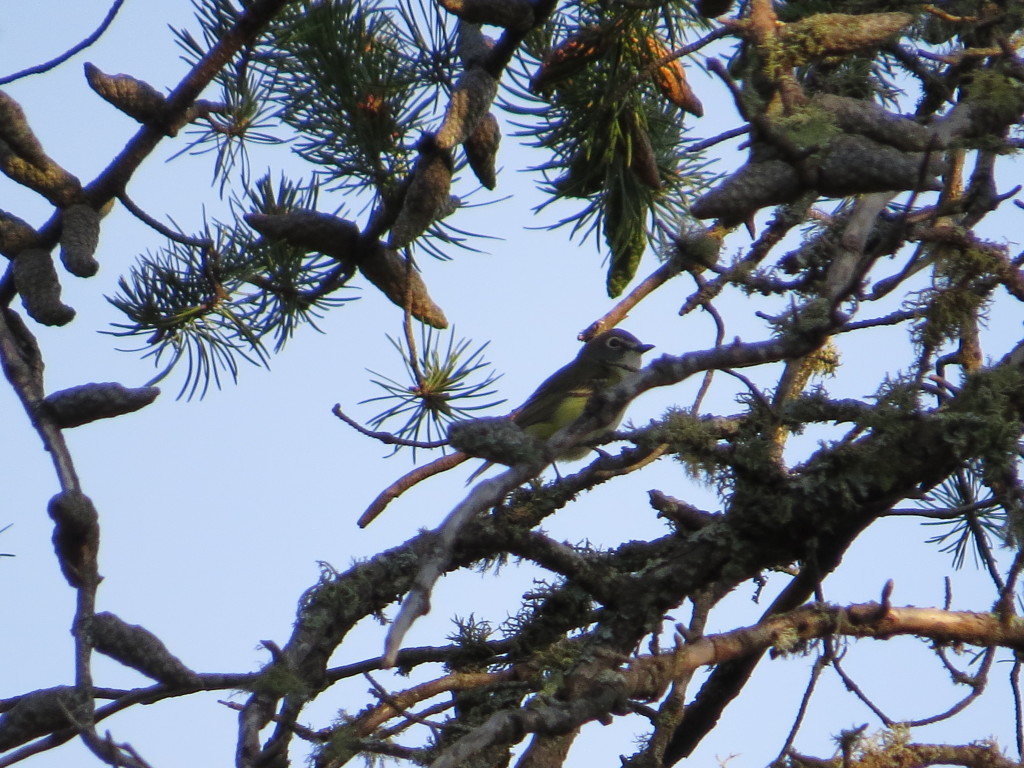 This bird has never been good to me. It was once a nemesis and continues to be a photographic nemesis. By the time I figured out its rhythm of jumping to a new perch each time after it sang, the bird disappeared from sight.
This bird has never been good to me. It was once a nemesis and continues to be a photographic nemesis. By the time I figured out its rhythm of jumping to a new perch each time after it sang, the bird disappeared from sight.
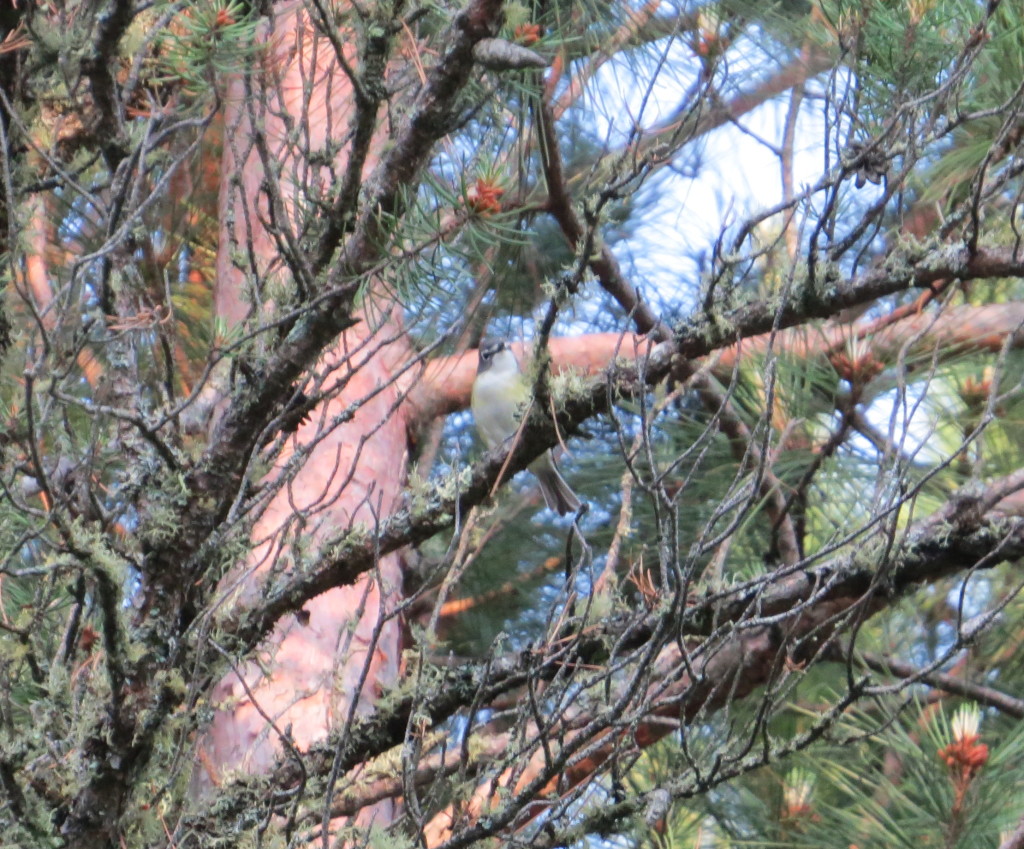
In the area of the Iron Range we call home, there is a substantial amount of open farm country, mostly hay fields and no crops. Still, the grasslands and horse farms are great for some good non-forest birds, the best of which was a pair of Black-billed Magpies. Julie Grahn had told me about these, and I’ve been seeing this species more and more every time I go up north. It’s been stated that the Sax-Zim Bog is the furthest east this species breeds. Well, this location was even further east yet, so it’s a pretty exciting find!
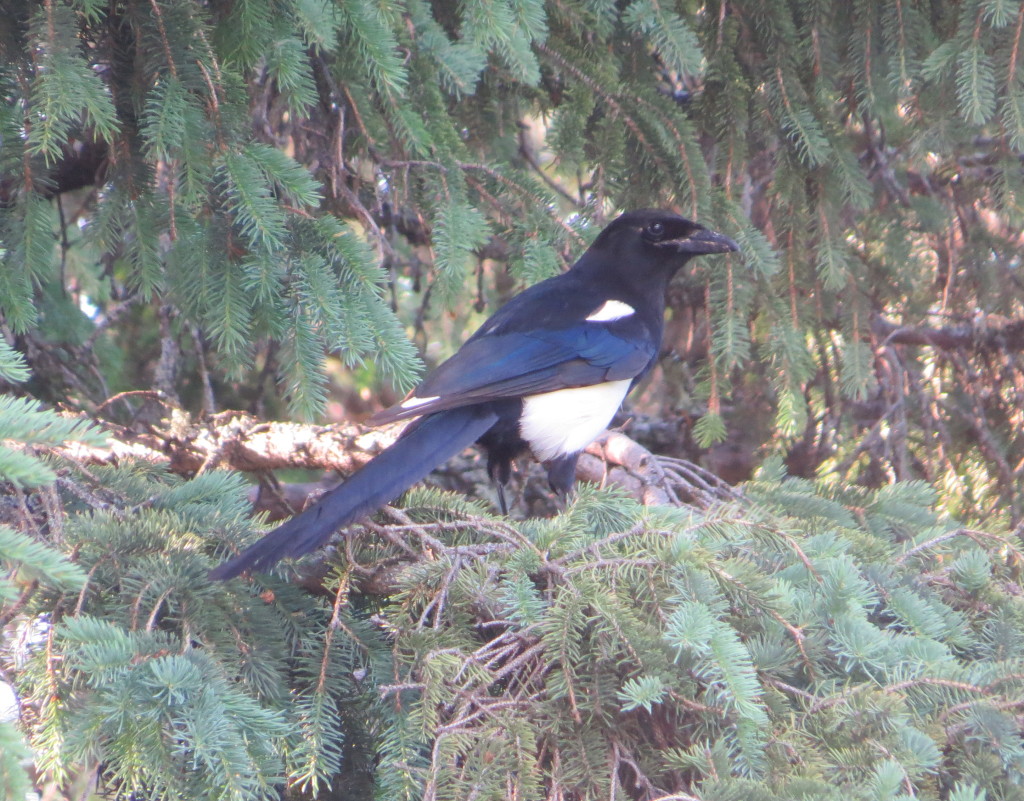 Also found in an open area was a bird that I have seen so many times this year and never before in the Northland, the Brown Thrasher.
Also found in an open area was a bird that I have seen so many times this year and never before in the Northland, the Brown Thrasher.
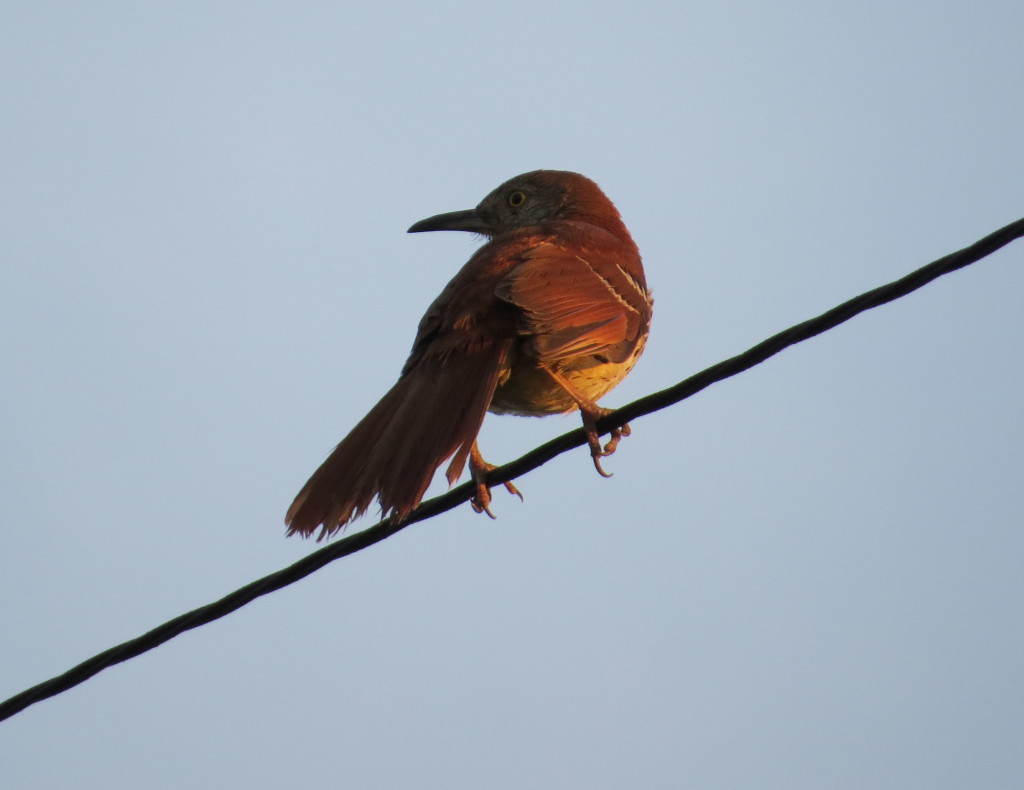 One bird that favors the open grassy fields that intersperse the Northwoods are the showy, and unique-sounding Bobolinks. They must be having a good year because I saw so many.
One bird that favors the open grassy fields that intersperse the Northwoods are the showy, and unique-sounding Bobolinks. They must be having a good year because I saw so many.
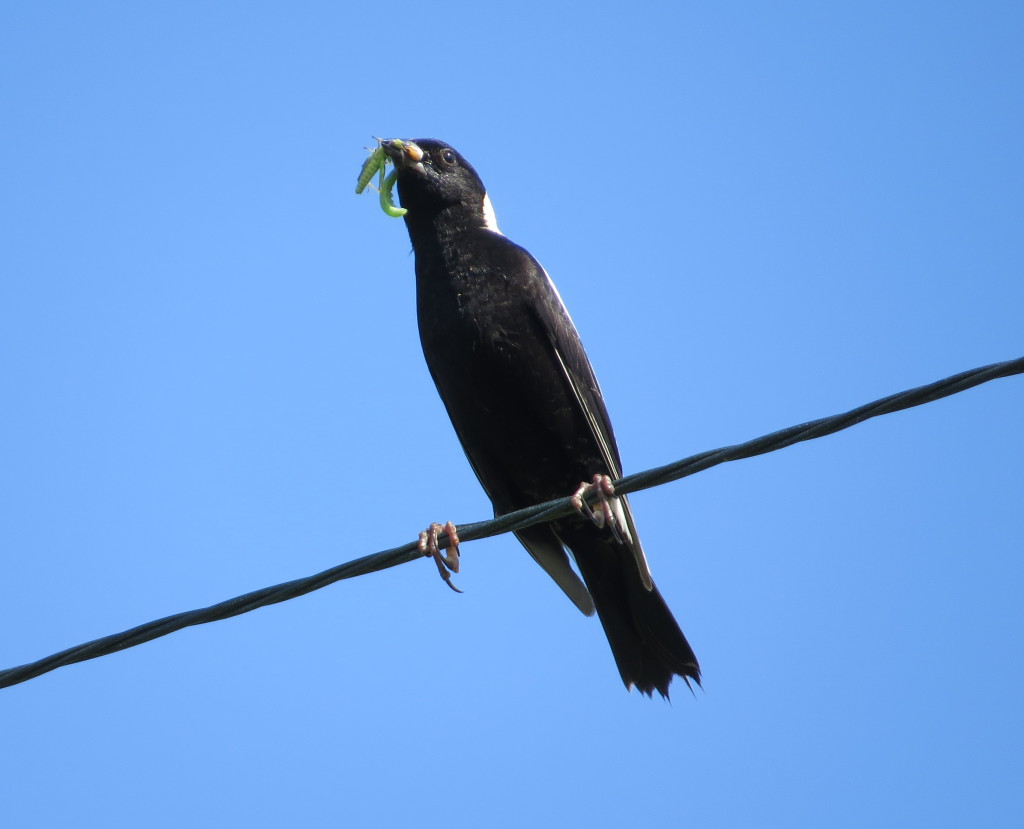
They were also more cooperative than I’ve ever seen them before. It felt good to finally photograph a BOBO properly.
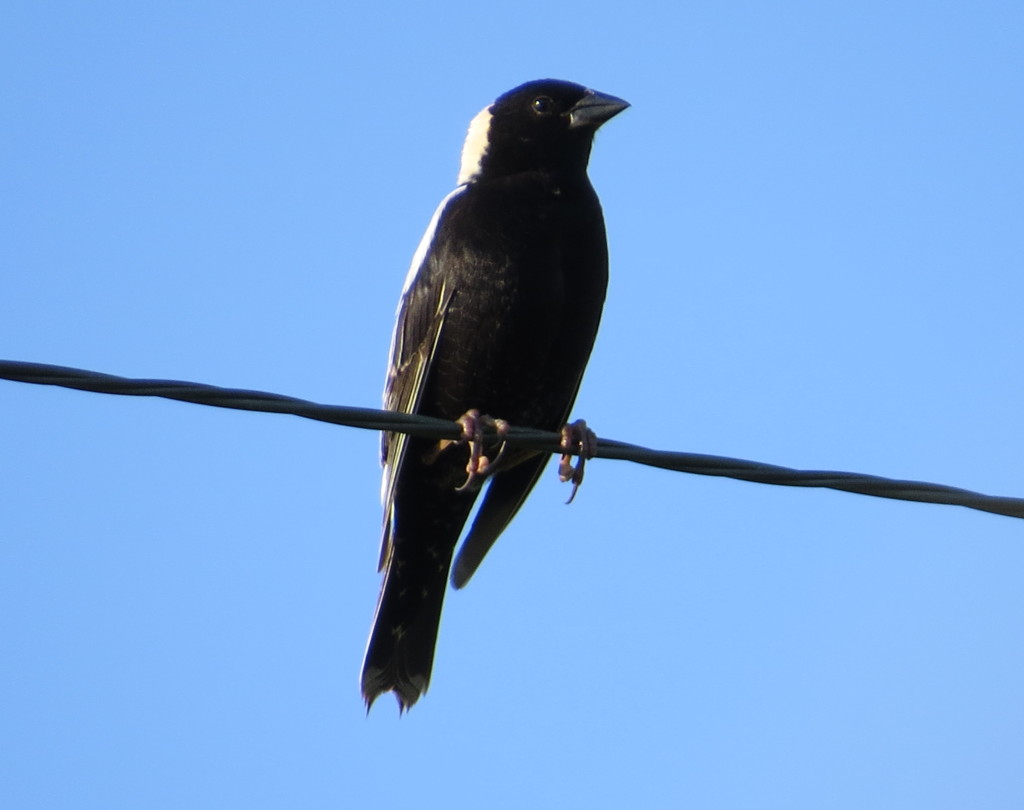
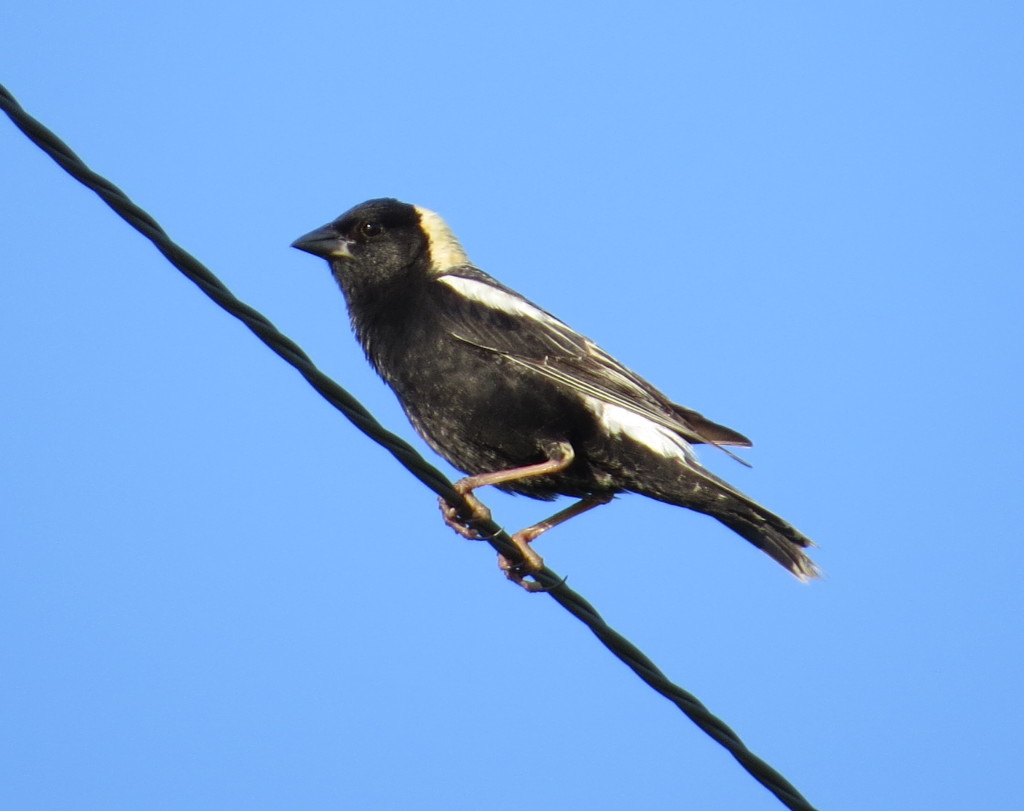
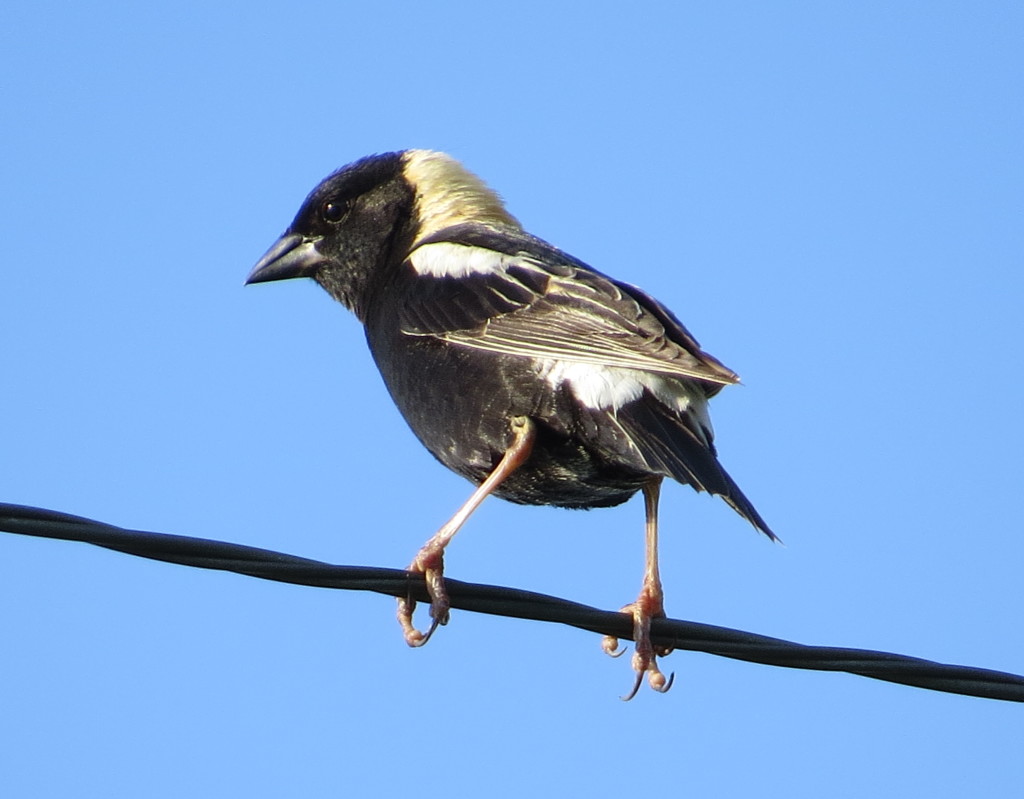 One bird that I was absolutely surprised to find in the open fields were Brewer’s Blackbirds! I had no idea they were in the area. Honestly, I often just dismiss most blackbirds I see as Red-winged Blackbirds or Common Grackles. Needless to say I was pleasantly surprised when I saw the Brewer’s. Like the Bobolink, it was nice to finally be able to get some decent photos of this bird too.
One bird that I was absolutely surprised to find in the open fields were Brewer’s Blackbirds! I had no idea they were in the area. Honestly, I often just dismiss most blackbirds I see as Red-winged Blackbirds or Common Grackles. Needless to say I was pleasantly surprised when I saw the Brewer’s. Like the Bobolink, it was nice to finally be able to get some decent photos of this bird too.
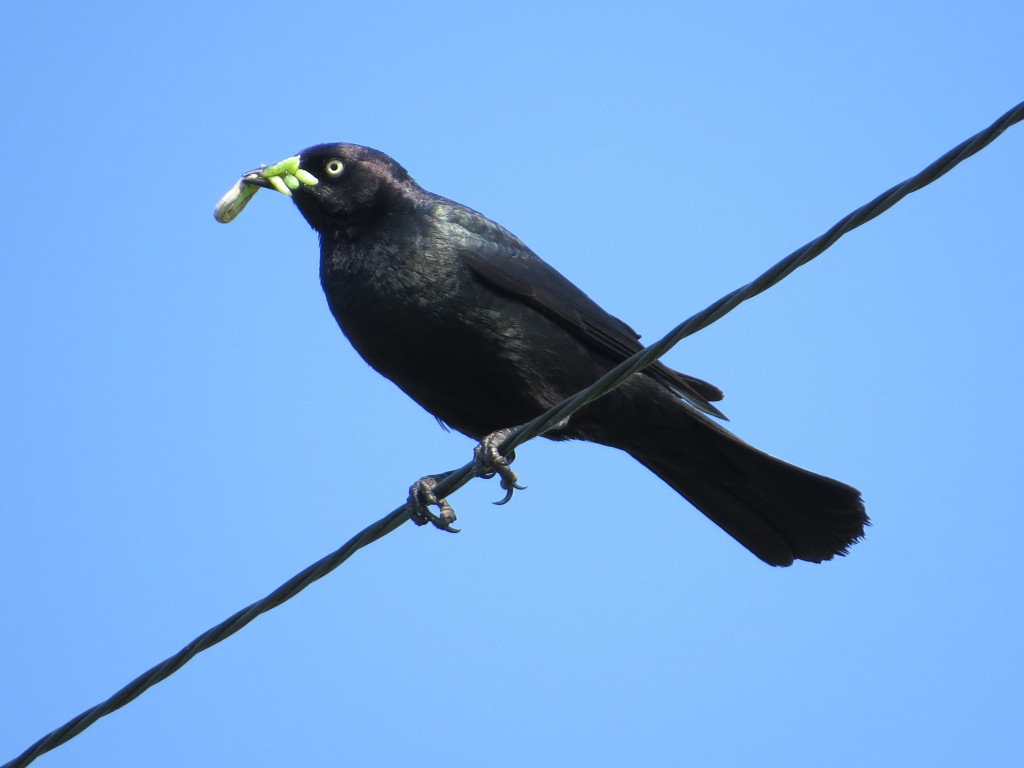
This dad was busy feeding a fledgling. I was scolded often during this photo shoot.
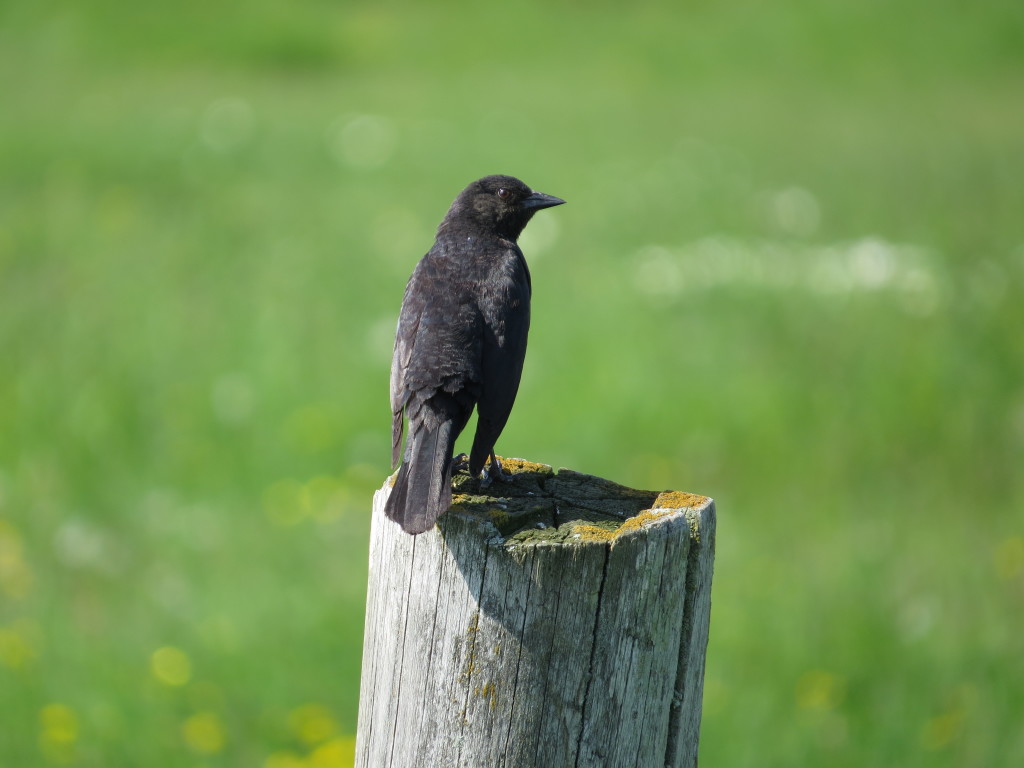
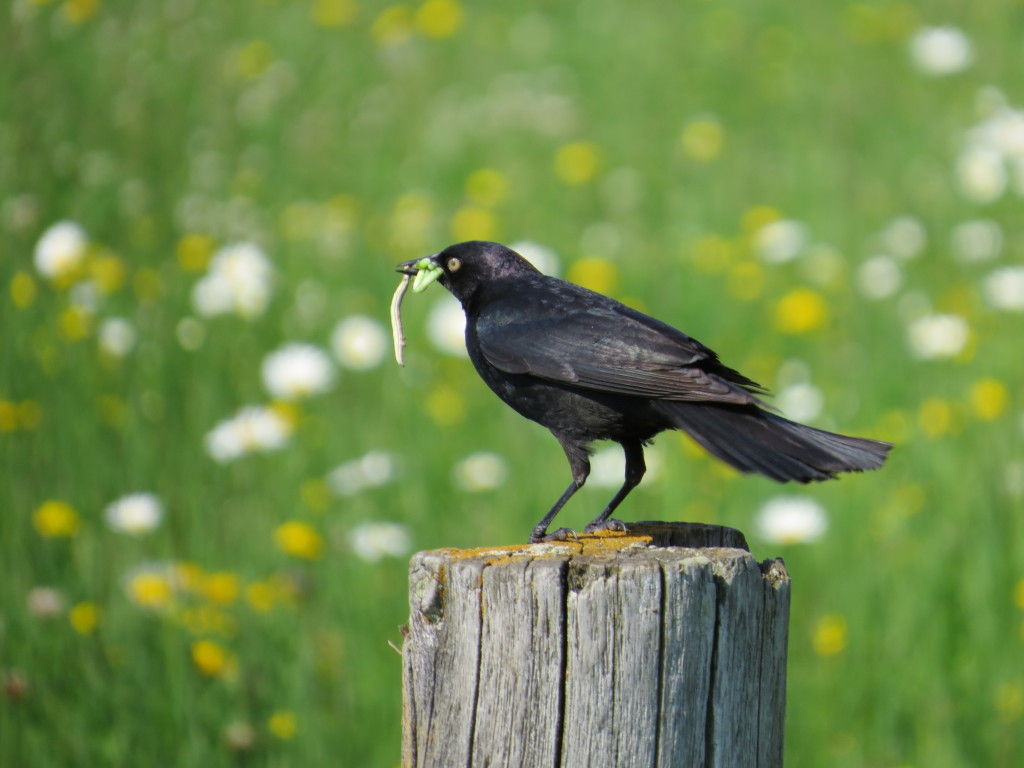
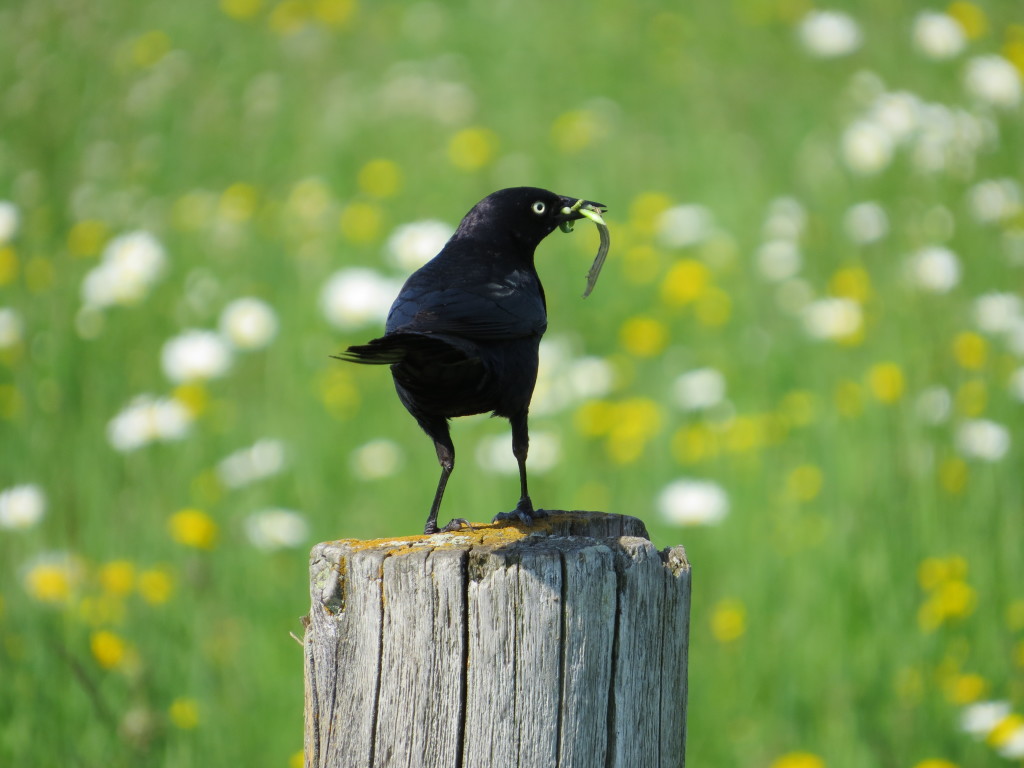
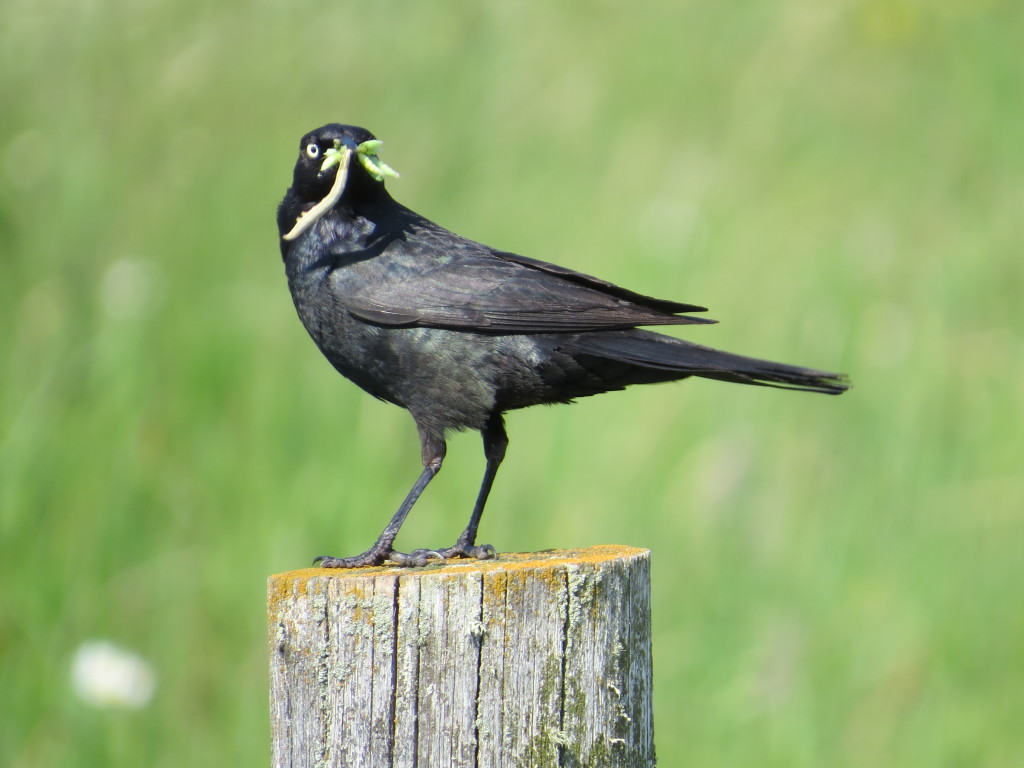 I had some really fun birding on this trip up north. I was not lifer hunting as there really are so few lifers I can still get. And none of them are easy. Or so I thought. In the next post I’ll tell you about a three-generation lifer that was delivered right to the doorstep.
I had some really fun birding on this trip up north. I was not lifer hunting as there really are so few lifers I can still get. And none of them are easy. Or so I thought. In the next post I’ll tell you about a three-generation lifer that was delivered right to the doorstep.
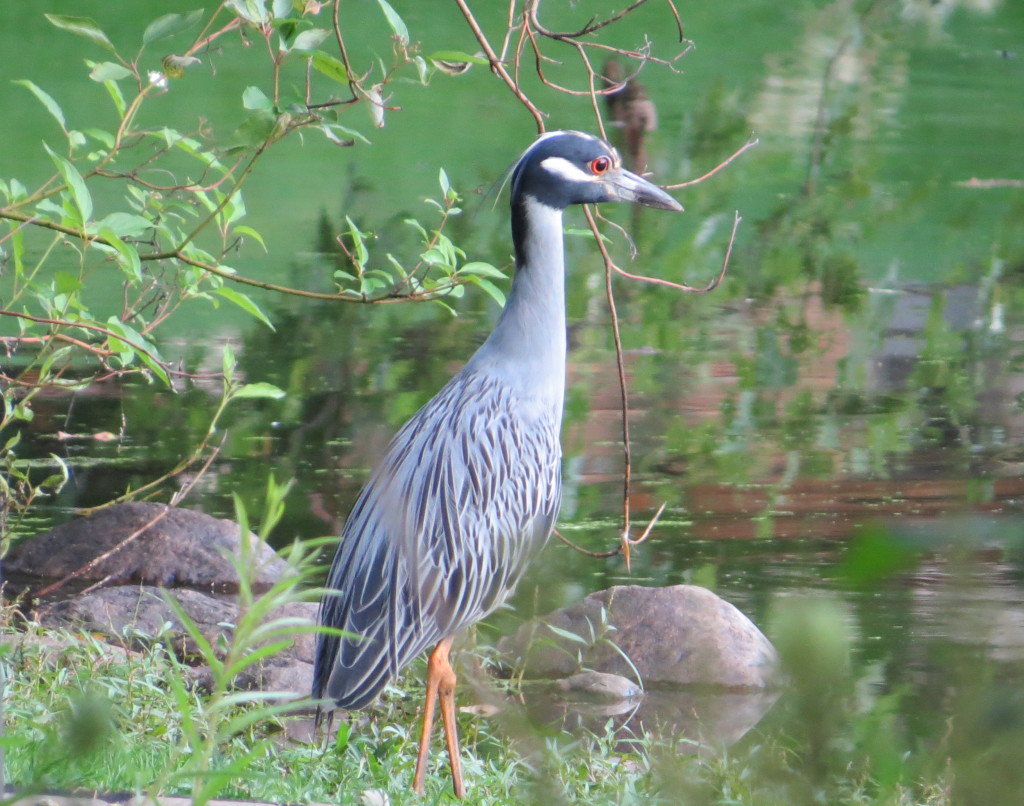
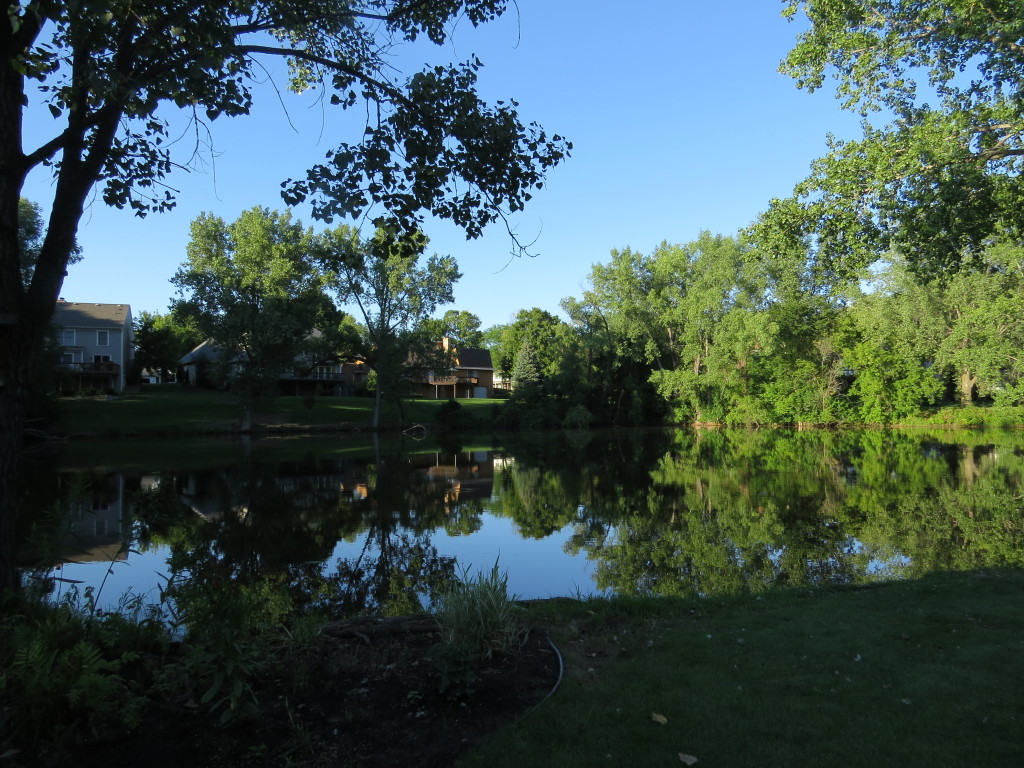 The two large backyard ponds and connecting channel had many shady, reclusive haunts and corners from the overgrown vegetation along the banks. And there were enough large snails and crayfish around for Herons to have a “Chubby Bunny” contest too.
The two large backyard ponds and connecting channel had many shady, reclusive haunts and corners from the overgrown vegetation along the banks. And there were enough large snails and crayfish around for Herons to have a “Chubby Bunny” contest too.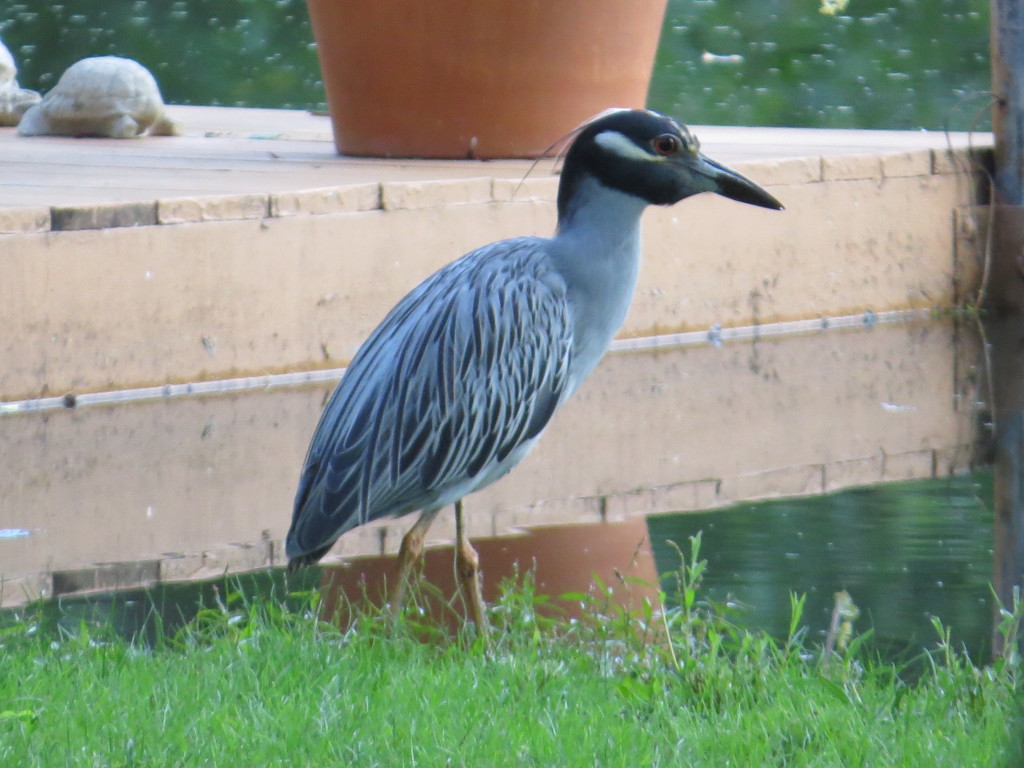 The announcement came in early enough in the evening that those lucky Twin Cities birders could swarm it immediately. My trip was too far to get there before dark. I was there the next day, though. Conveniently I had to go to the Cities that day anyway. Inconveniently, the time of day was wrong and the bird did not come out. So I made the 1.5 hour trek again the following day, only this time in the evening when the bird had been showing. It took nearly two hours of waiting, but just as I was about to call it quits, the bird flew in from its treetop roost to begin its foraging.
The announcement came in early enough in the evening that those lucky Twin Cities birders could swarm it immediately. My trip was too far to get there before dark. I was there the next day, though. Conveniently I had to go to the Cities that day anyway. Inconveniently, the time of day was wrong and the bird did not come out. So I made the 1.5 hour trek again the following day, only this time in the evening when the bird had been showing. It took nearly two hours of waiting, but just as I was about to call it quits, the bird flew in from its treetop roost to begin its foraging.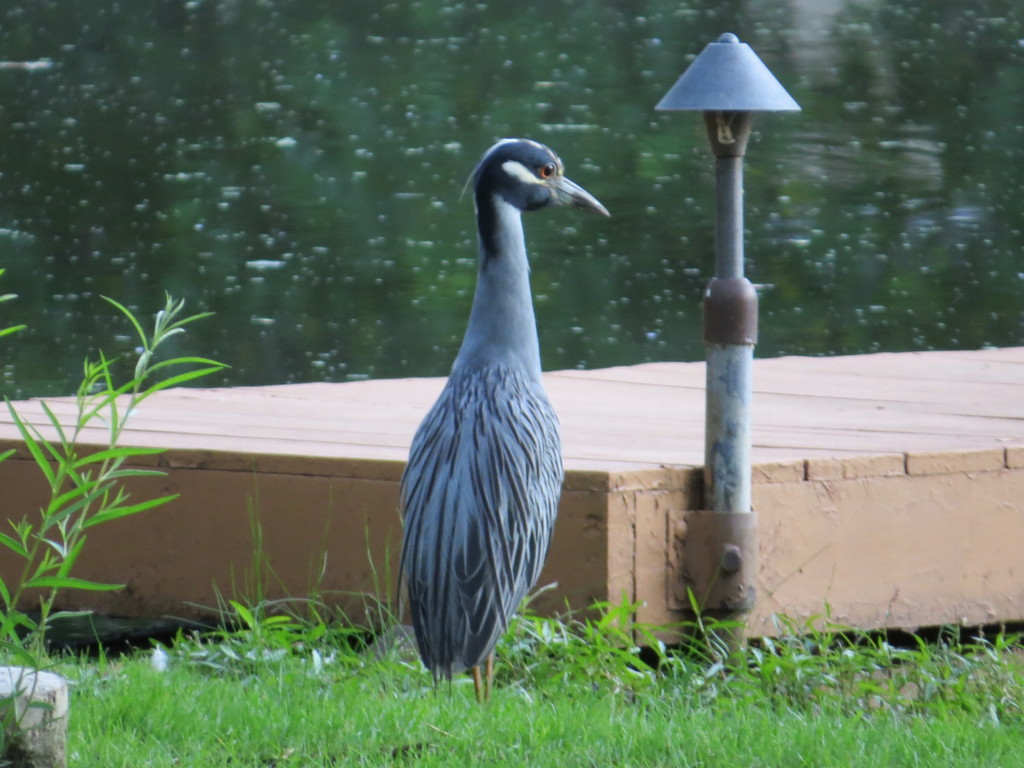
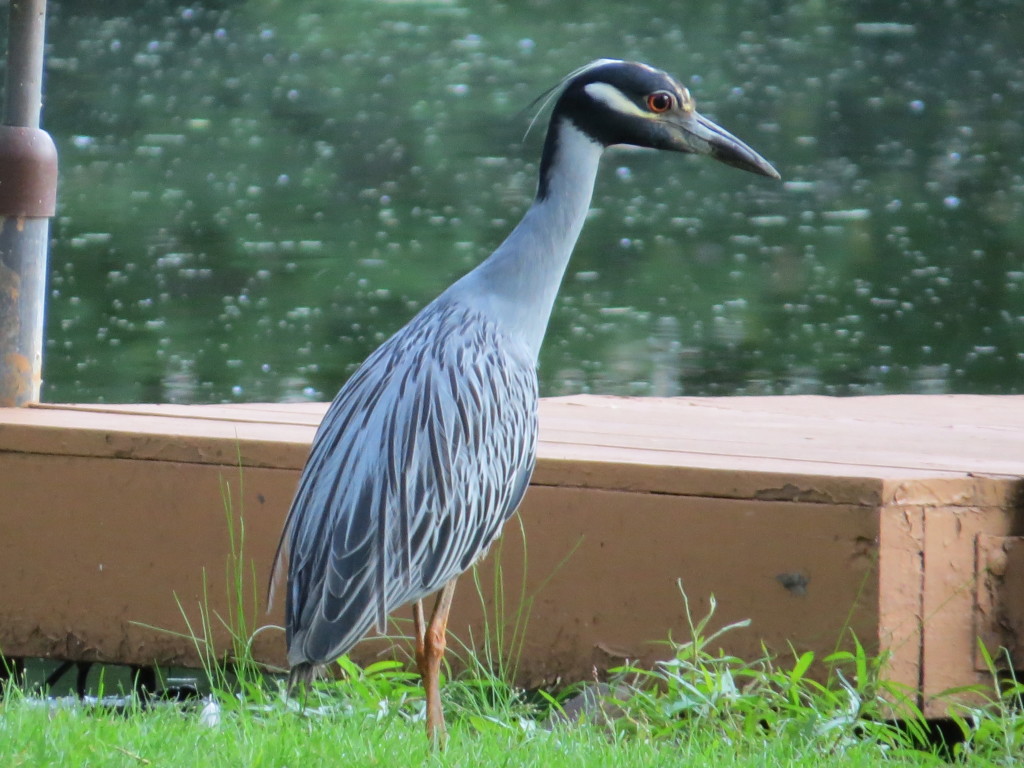

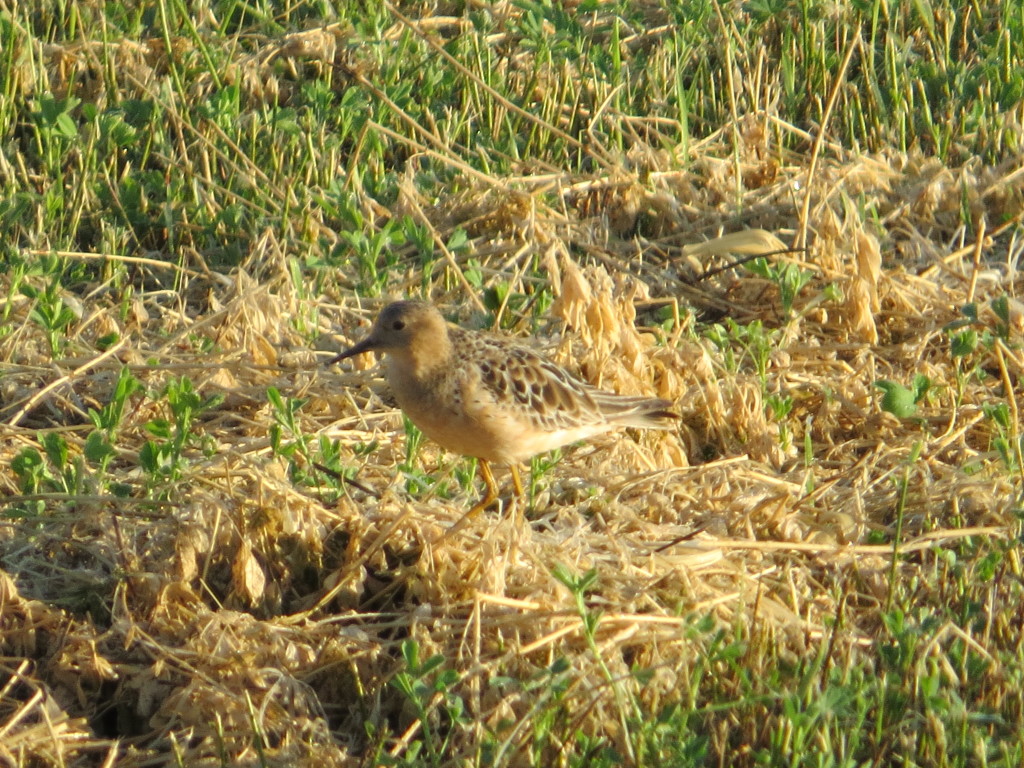
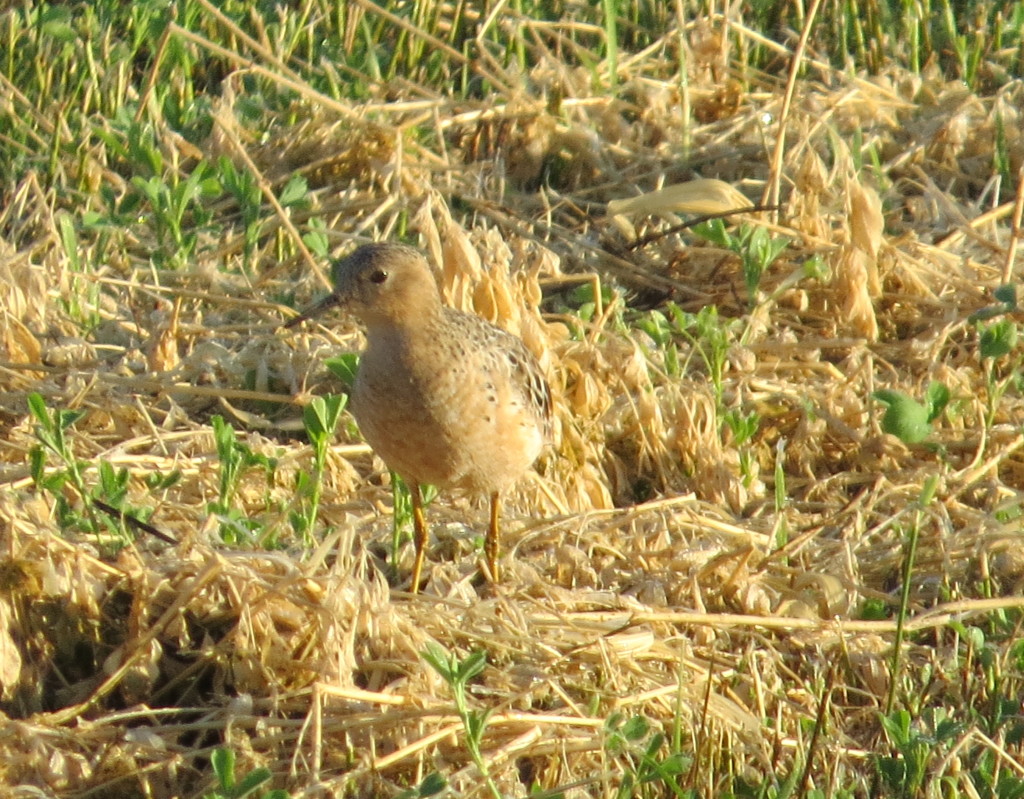 This ripped bird was a lifer for Dad.
This ripped bird was a lifer for Dad.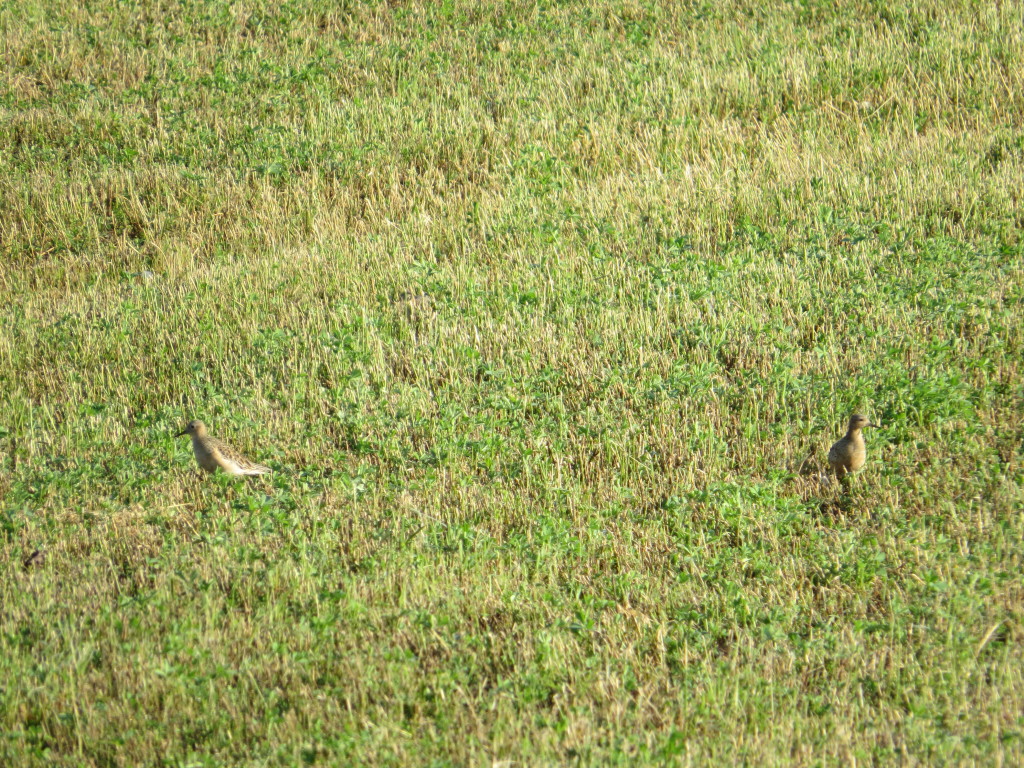
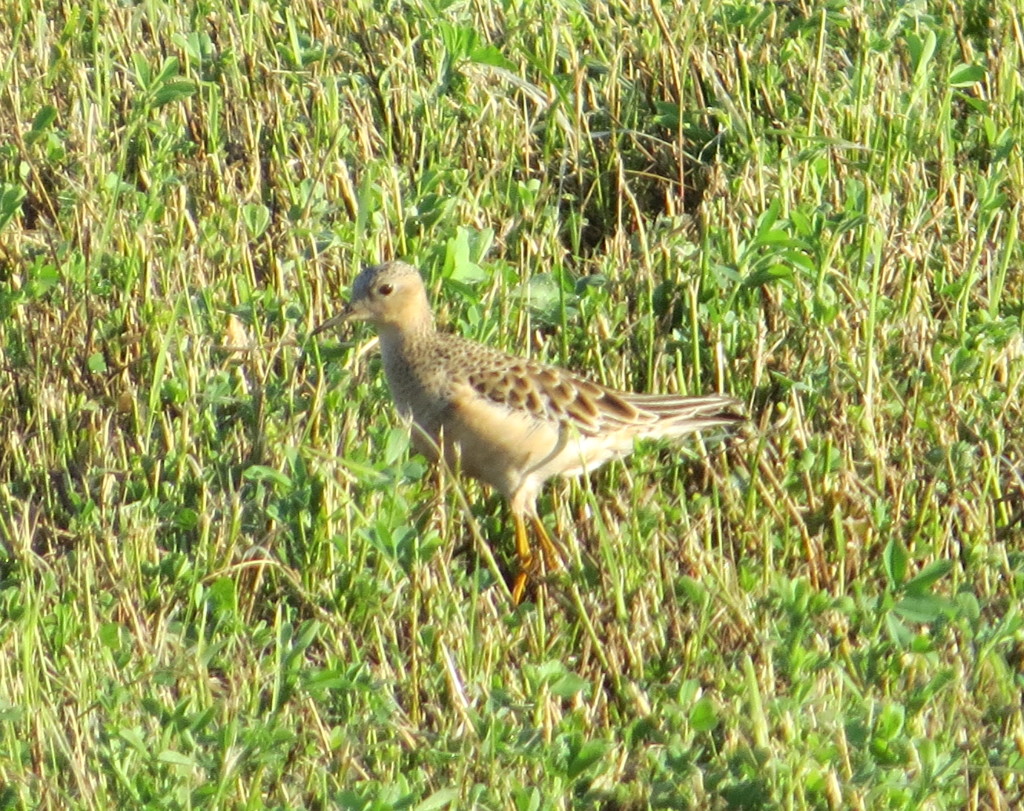 I did not take this photo-op for granted. These birds are usually only found with the aid of scopes. Having them 100 feet out the car window is about as good as it gets.
I did not take this photo-op for granted. These birds are usually only found with the aid of scopes. Having them 100 feet out the car window is about as good as it gets.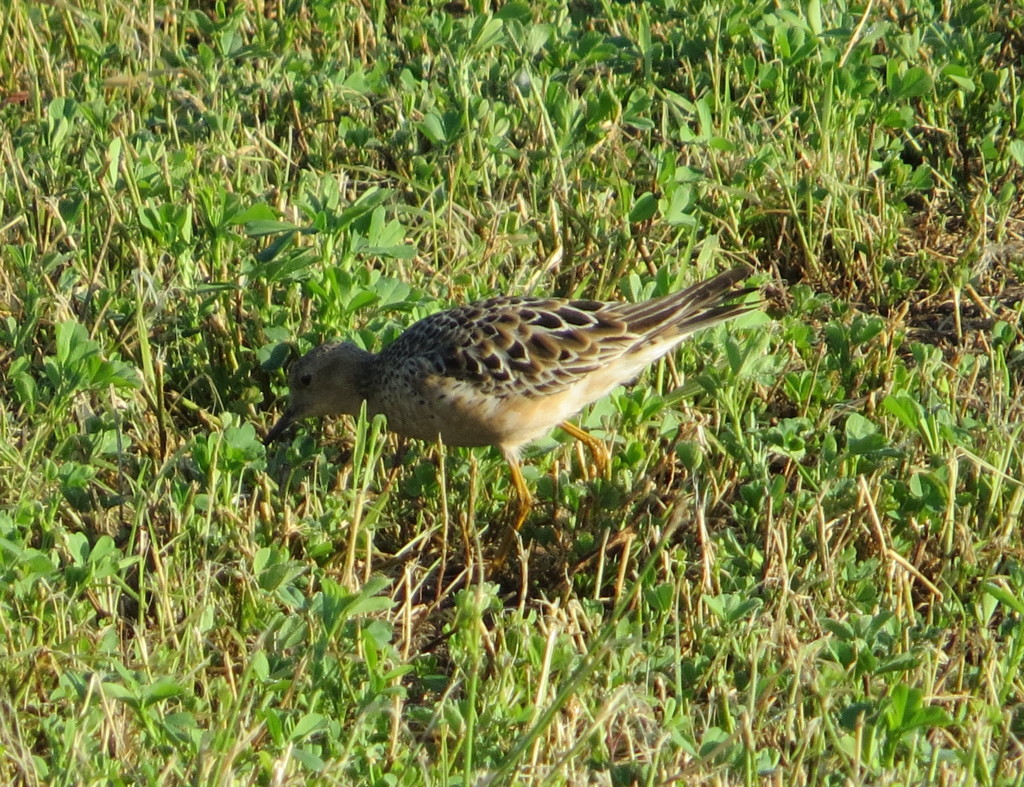
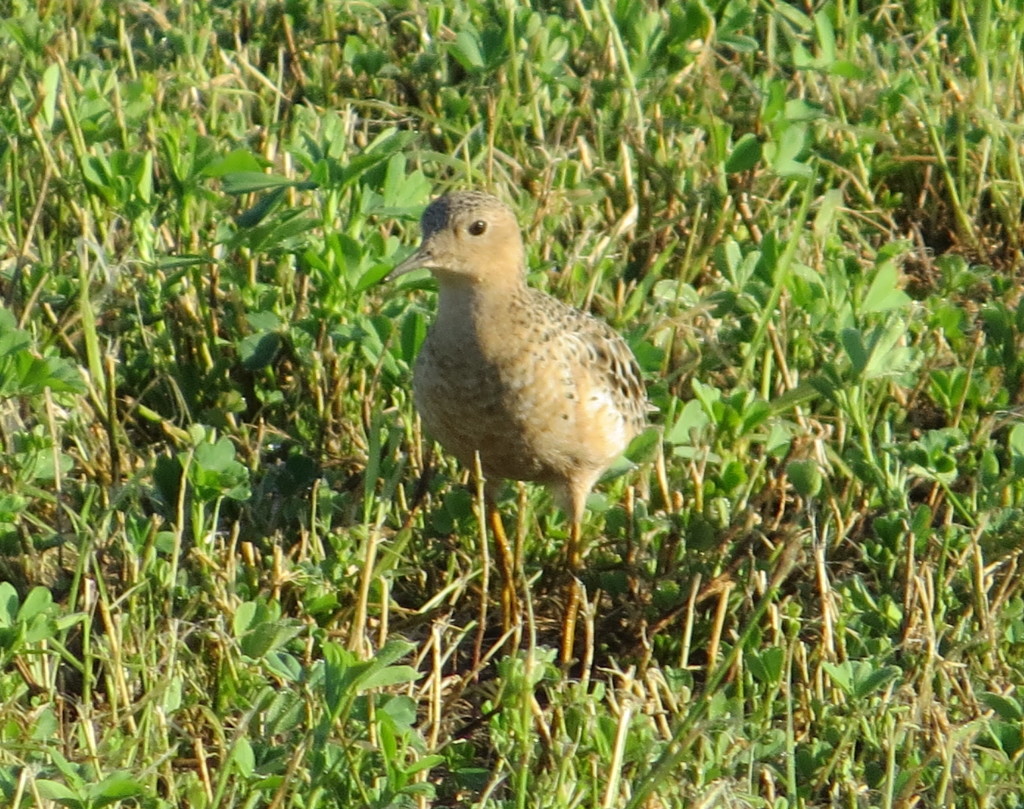
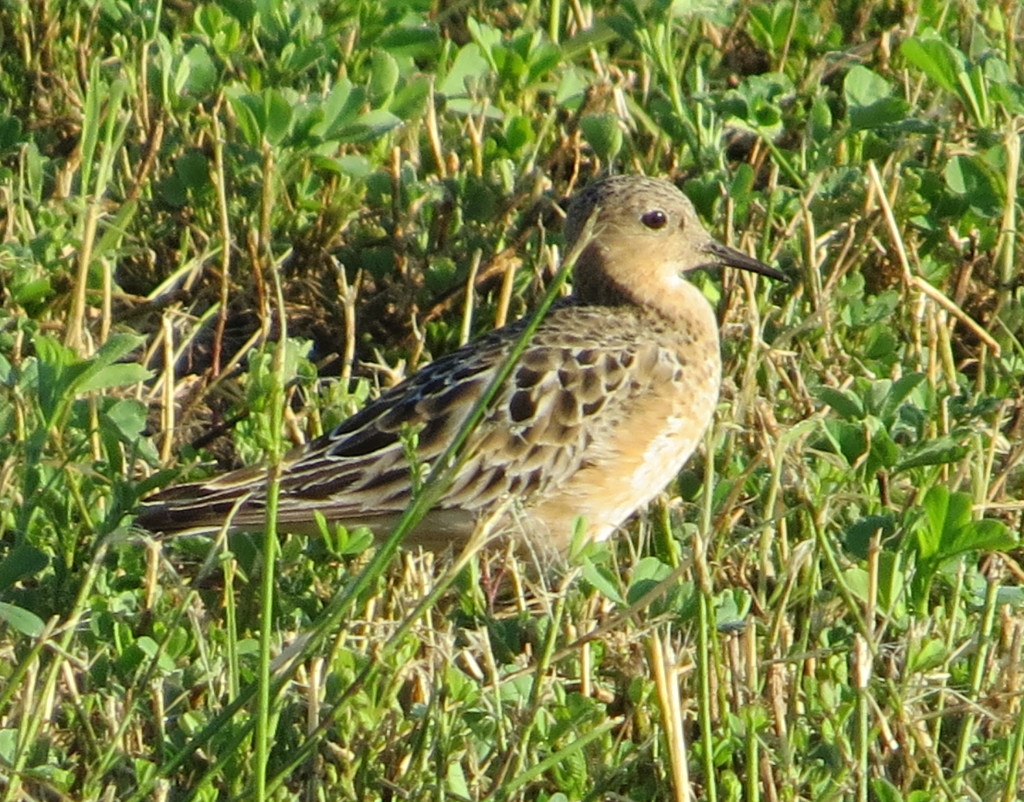
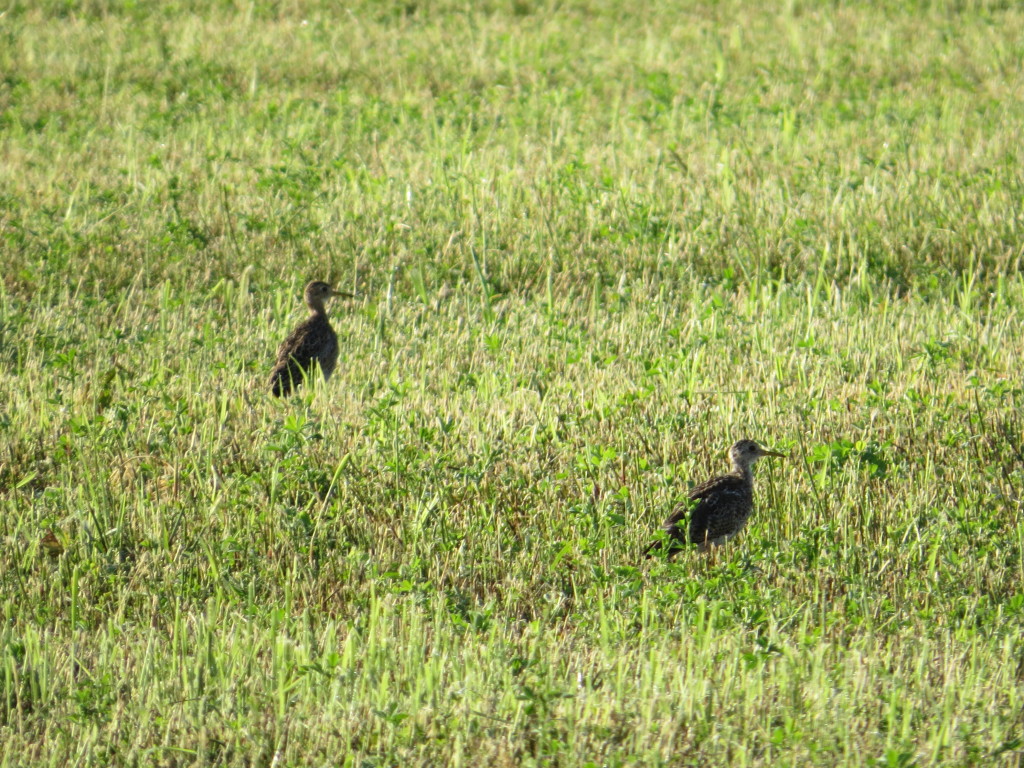 Dad’s not sure if this is a lifer or not. No doubt about its existence on his list now though.
Dad’s not sure if this is a lifer or not. No doubt about its existence on his list now though.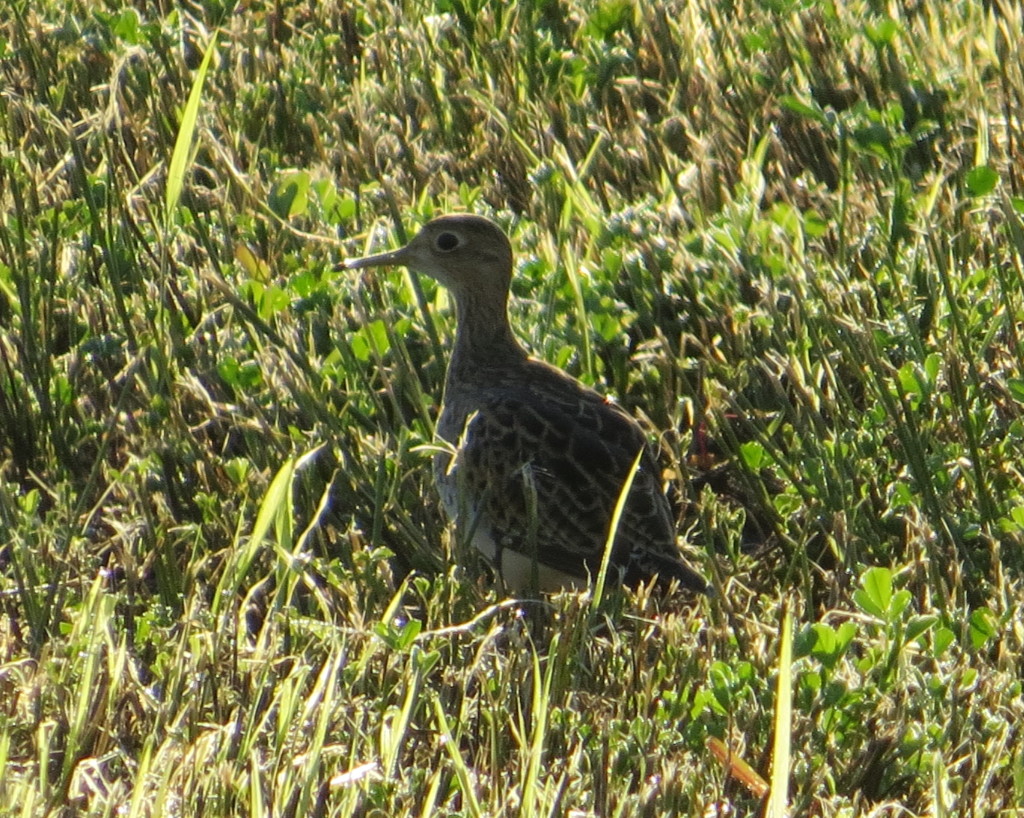
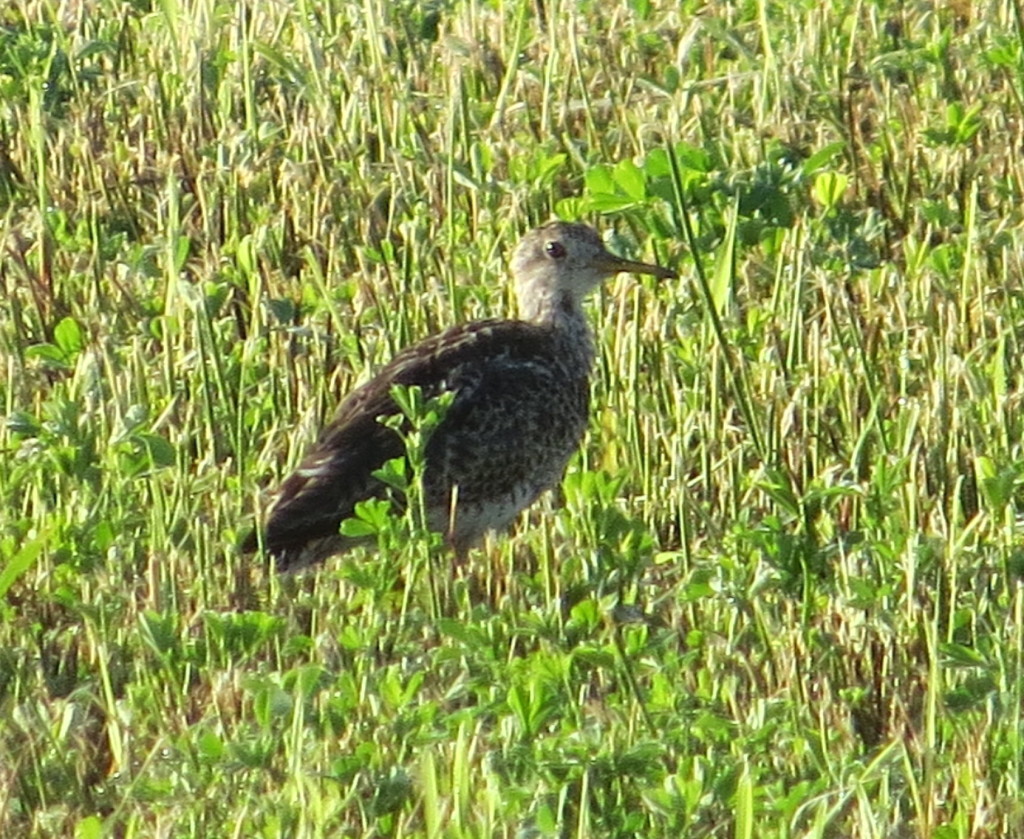 As delightful as the Sandpiper appetizers were, it was time for the main course: Blue Grosbeaks. We struck out on finding the one closest to the hay field, but not the other one a mile away. As soon as I rolled down my window I heard that sweet, sweet familiar sound of a singing male. After a bit of patience I was able to get Dad his life look at this special bird.
As delightful as the Sandpiper appetizers were, it was time for the main course: Blue Grosbeaks. We struck out on finding the one closest to the hay field, but not the other one a mile away. As soon as I rolled down my window I heard that sweet, sweet familiar sound of a singing male. After a bit of patience I was able to get Dad his life look at this special bird.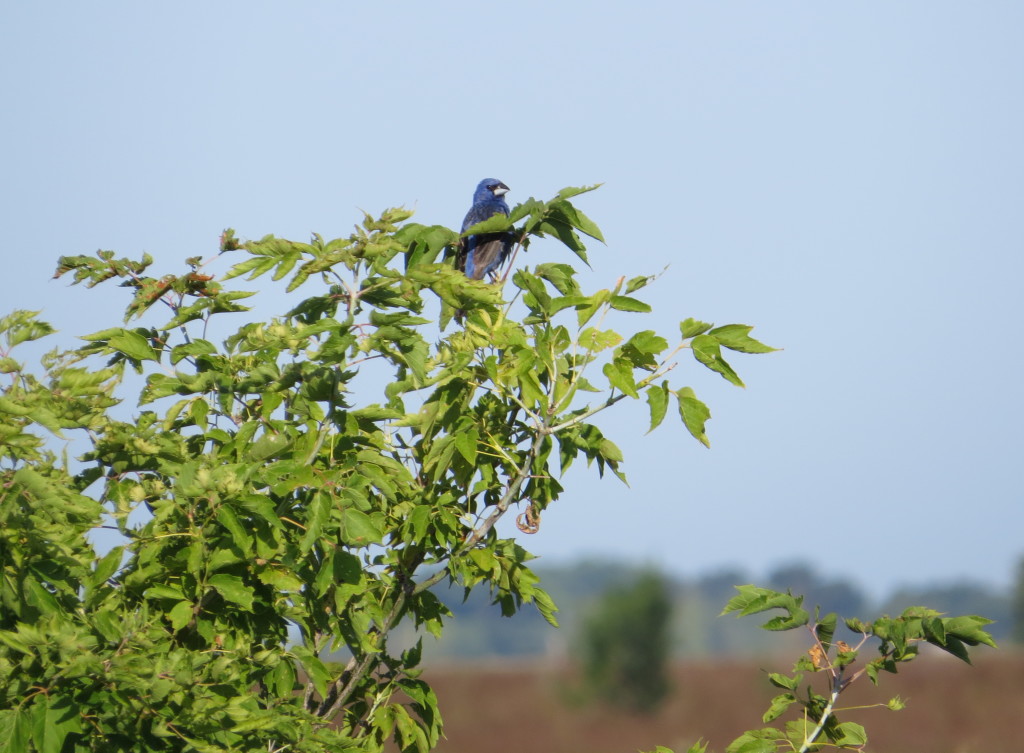 Even though this male impressed us with his vocal abilities over and over and over, he did not want to show off his studly rusty wing patch.
Even though this male impressed us with his vocal abilities over and over and over, he did not want to show off his studly rusty wing patch.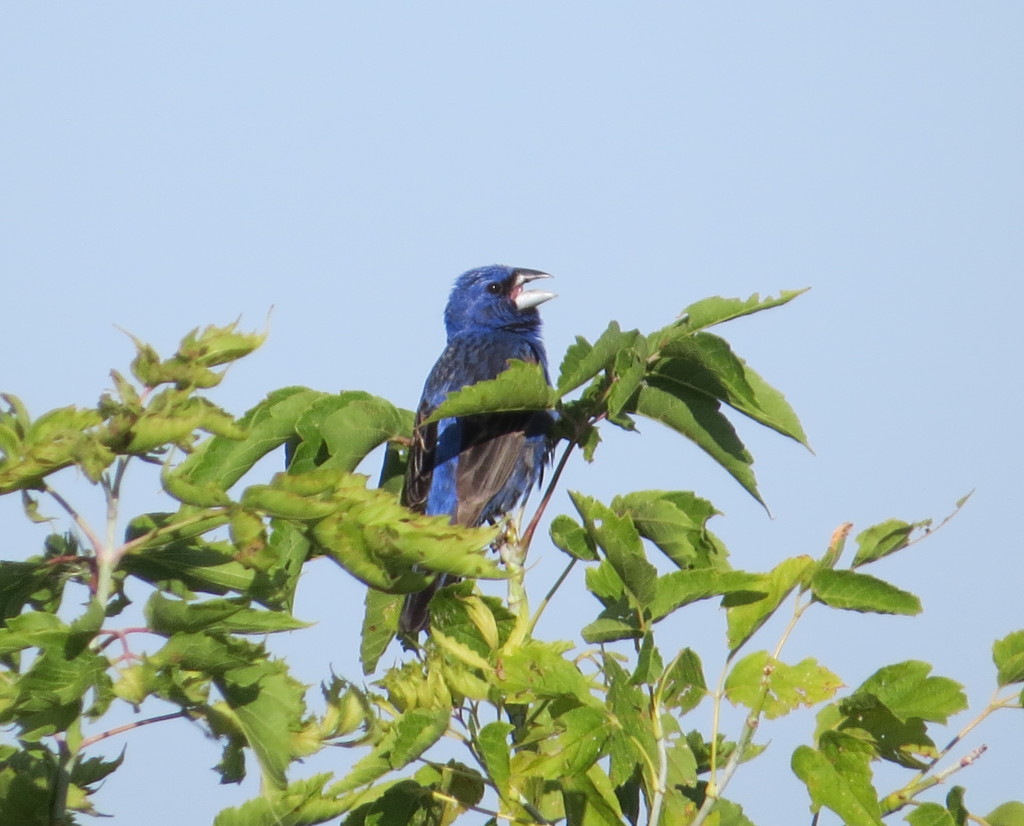 Dad was getting some good looks at his lifer, but I wanted him to get the full effect and see that wing patch. Eventually the bird bared it all with pride and great gusto.
Dad was getting some good looks at his lifer, but I wanted him to get the full effect and see that wing patch. Eventually the bird bared it all with pride and great gusto.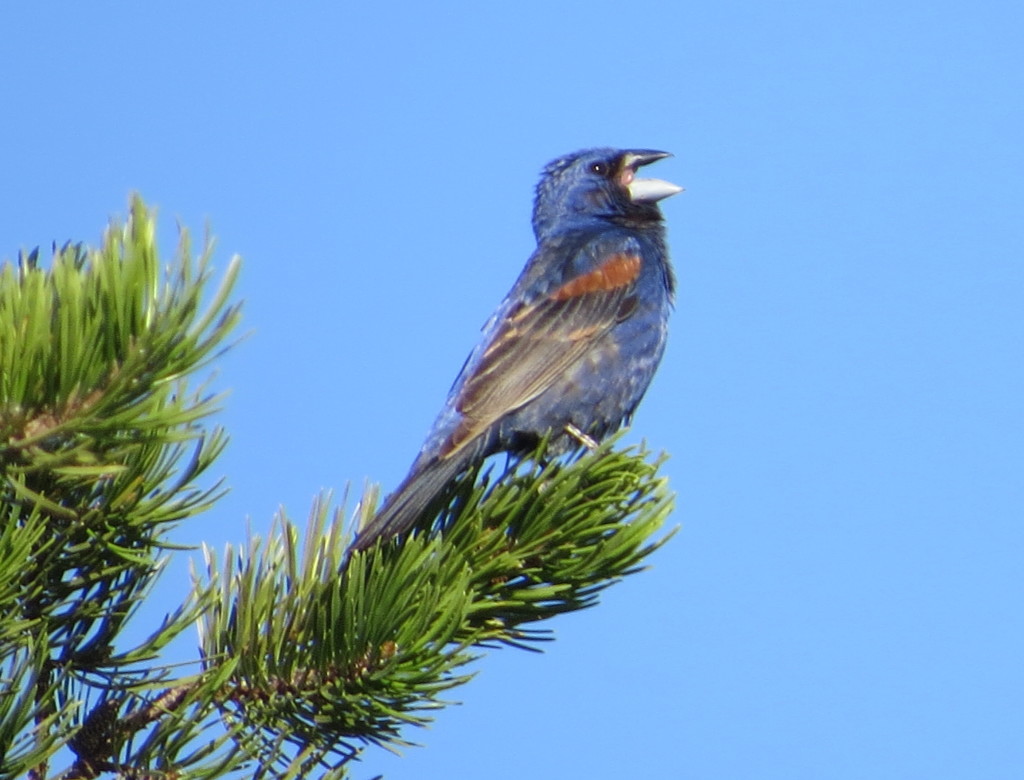
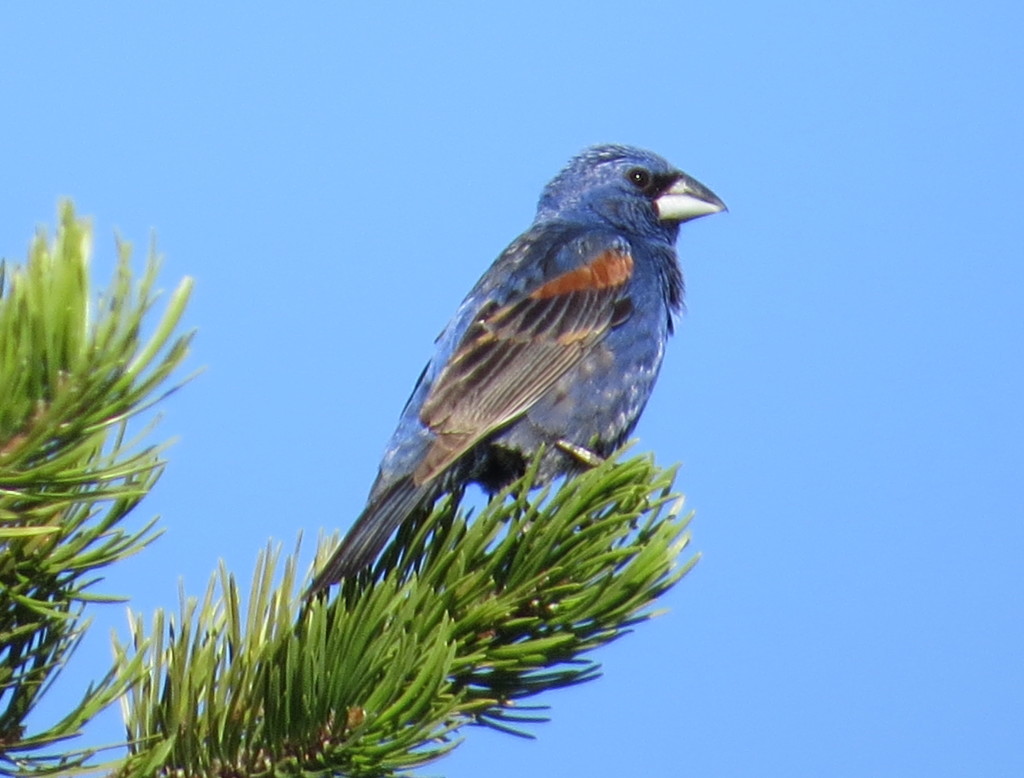 So where does the birding and blogging go after a morning like this? Nowhere but down again, of course.
So where does the birding and blogging go after a morning like this? Nowhere but down again, of course.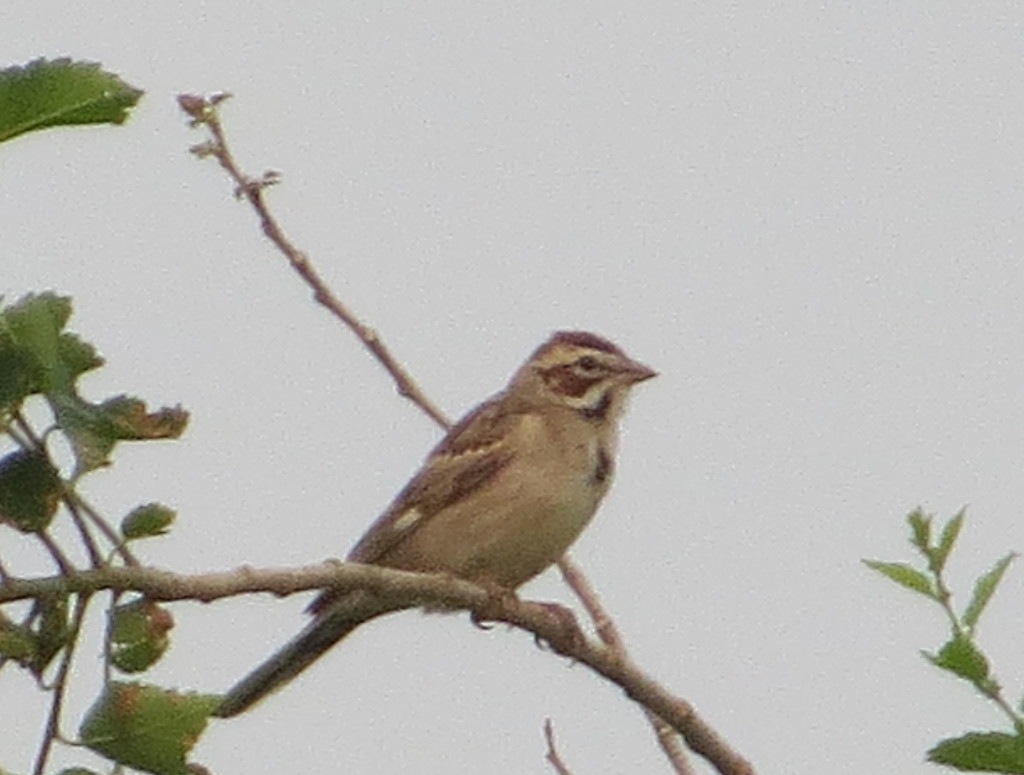
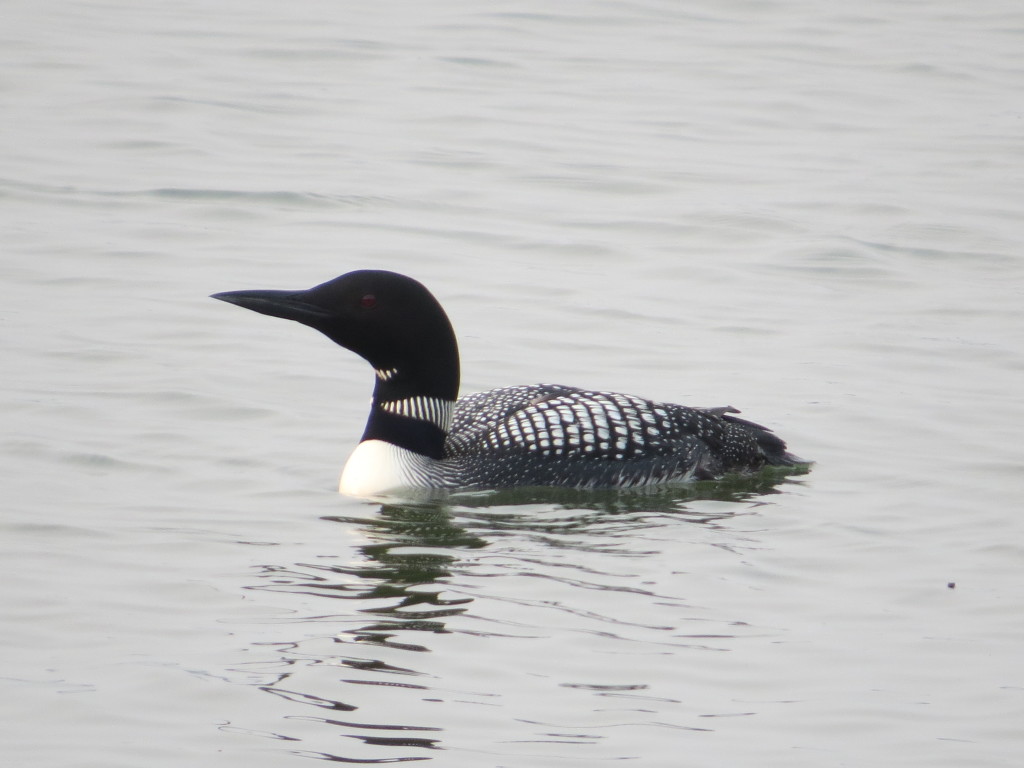 Hmmm…I wonder why they didn’t have a chick with them. It’s best not to think about that.
Hmmm…I wonder why they didn’t have a chick with them. It’s best not to think about that.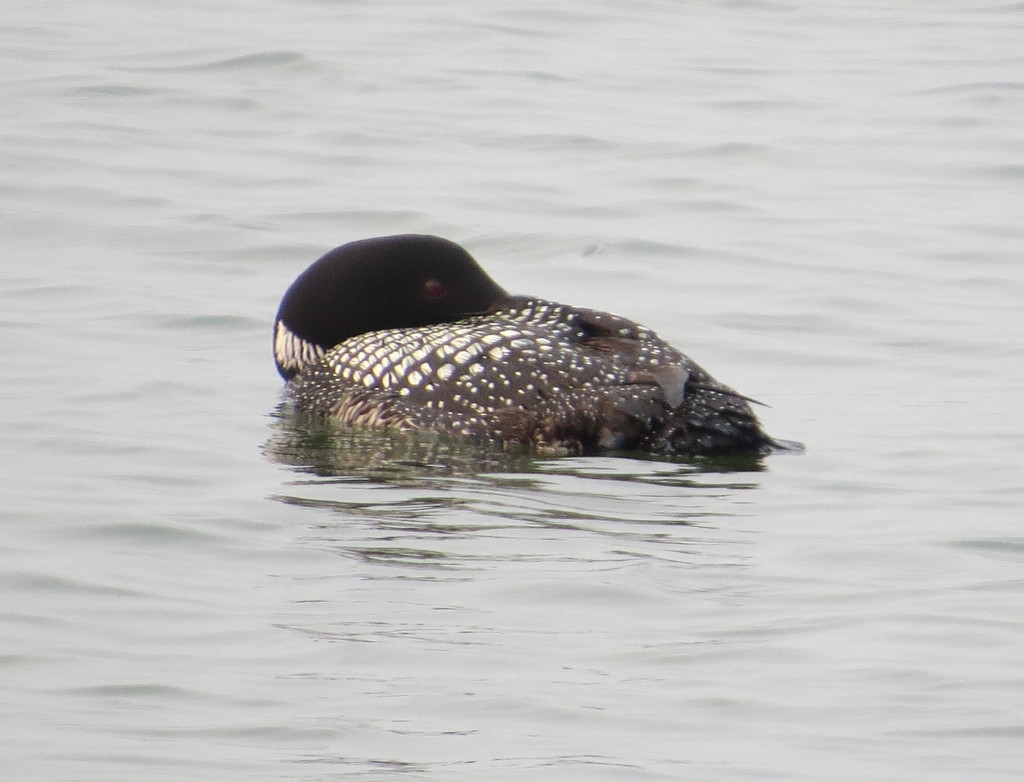 I got back to the house, happy with my morning, and was busy documenting my LASP sighting. Then an email came in that changed the course of my day. After nearly 15 hours of observing the mystery Kingbird over the course of a week, Bruce Fall clinched the ID after hearing the Kingbird vocalize when a Brown-headed Cowbird got too close for comfort. Tropical Kingbird. Holy smokes. This is a scarce bird in even the tiny corners of Arizona and Texas that it calls home. I told Melissa I would have to try to squeeze in a fast trip to the Cities to try for this one. This was a Minnesota first state record of a Tropical Kingbird after all.
I got back to the house, happy with my morning, and was busy documenting my LASP sighting. Then an email came in that changed the course of my day. After nearly 15 hours of observing the mystery Kingbird over the course of a week, Bruce Fall clinched the ID after hearing the Kingbird vocalize when a Brown-headed Cowbird got too close for comfort. Tropical Kingbird. Holy smokes. This is a scarce bird in even the tiny corners of Arizona and Texas that it calls home. I told Melissa I would have to try to squeeze in a fast trip to the Cities to try for this one. This was a Minnesota first state record of a Tropical Kingbird after all.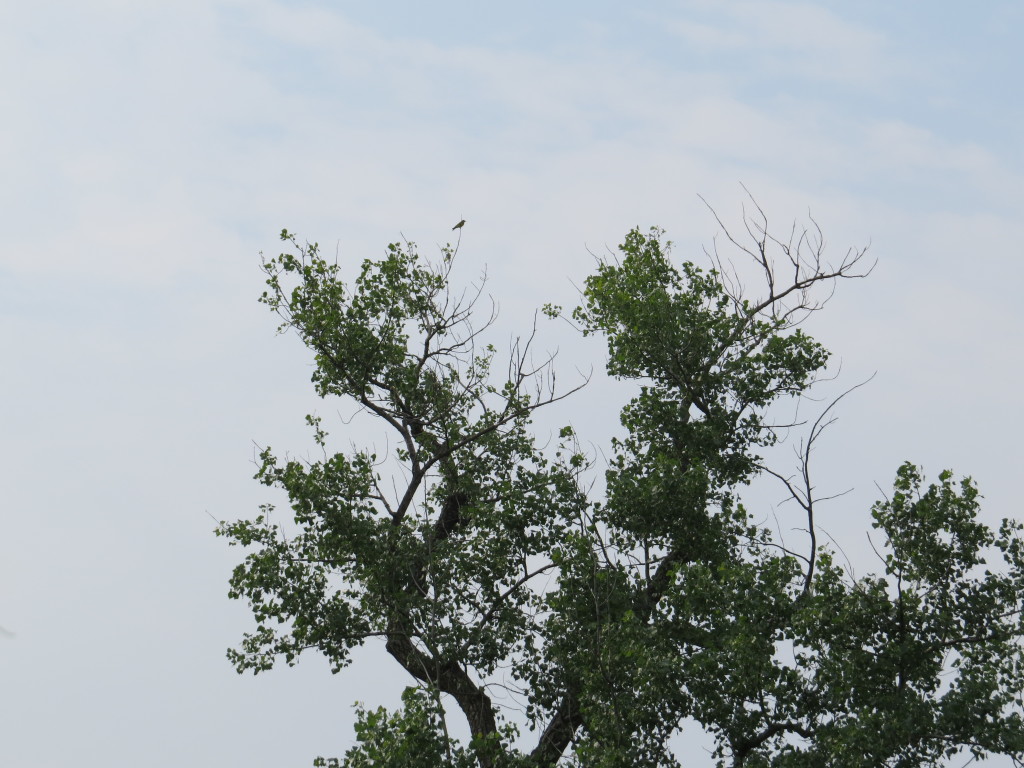
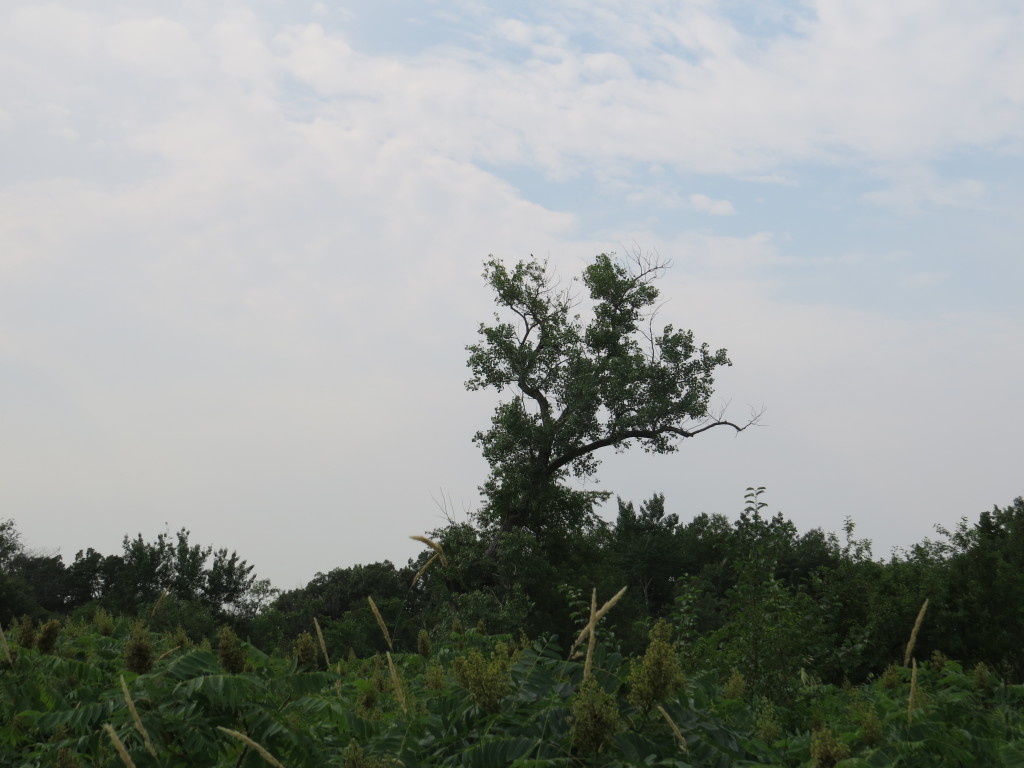
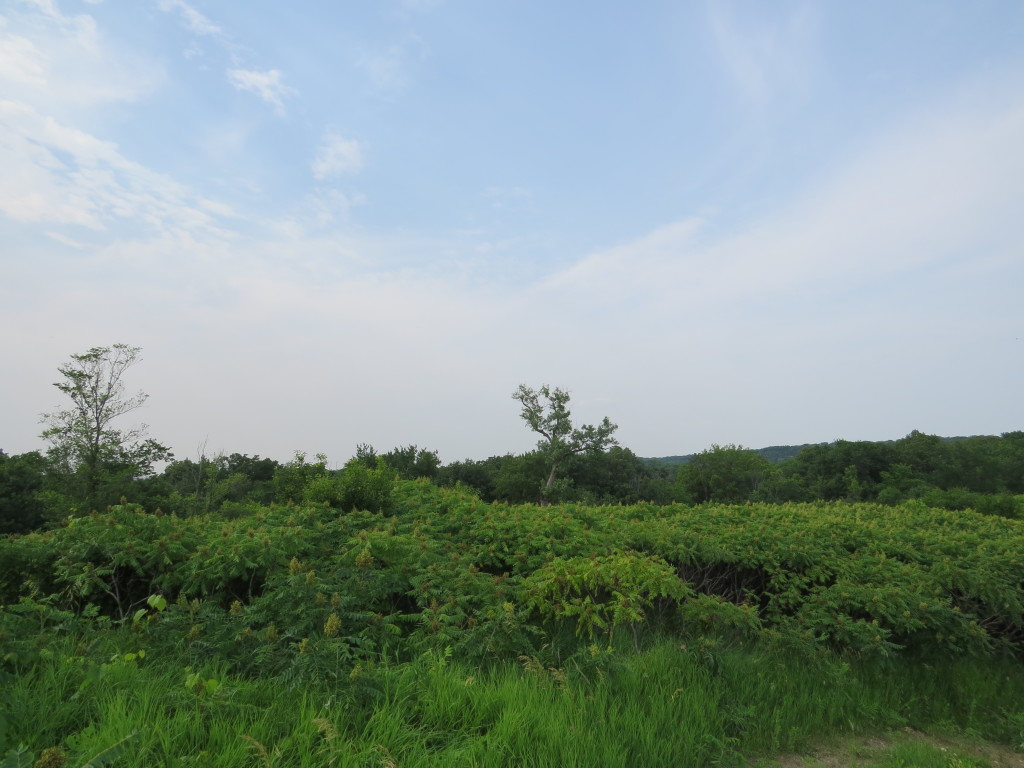 The bird was out there a ways, so I did the best I could for photos.
The bird was out there a ways, so I did the best I could for photos.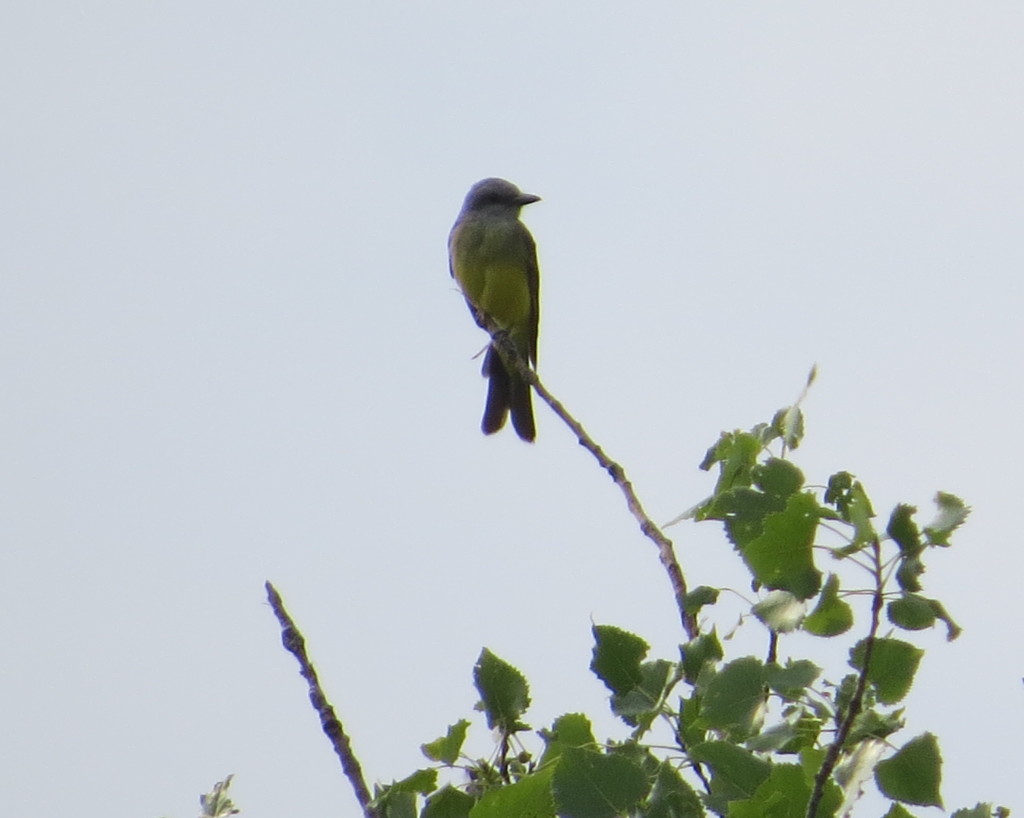
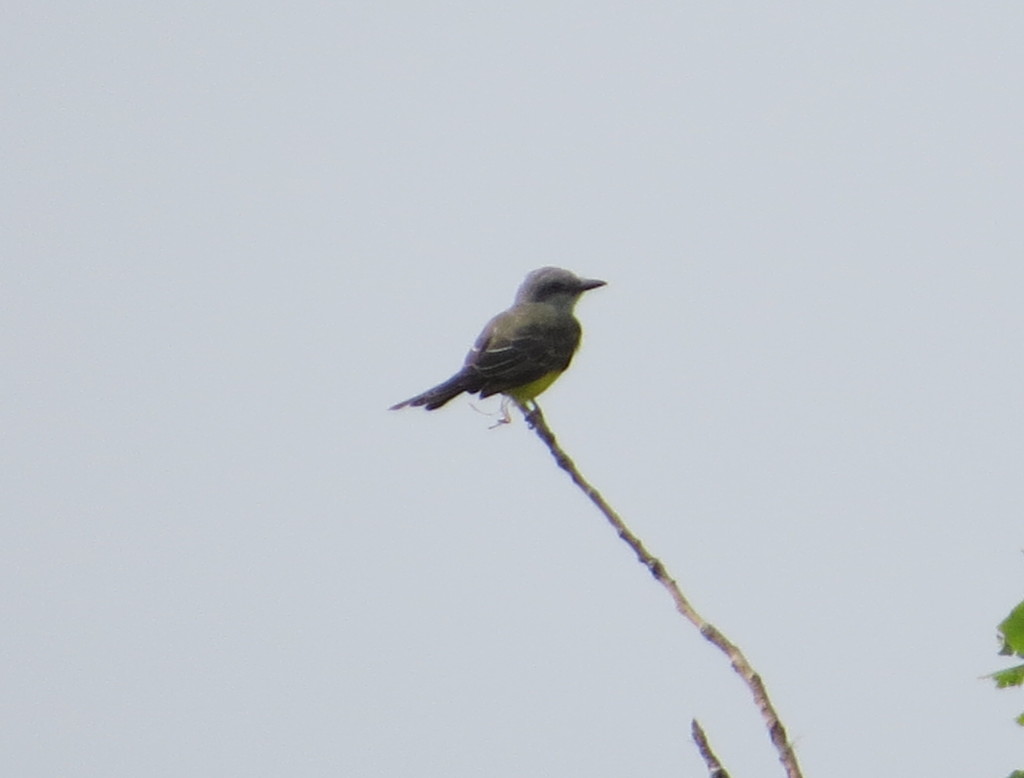 I showed the kids the bird on the camera’s LCD. With another check mark for his list, Evan was out of there (and Melissa and Marin too).
I showed the kids the bird on the camera’s LCD. With another check mark for his list, Evan was out of there (and Melissa and Marin too).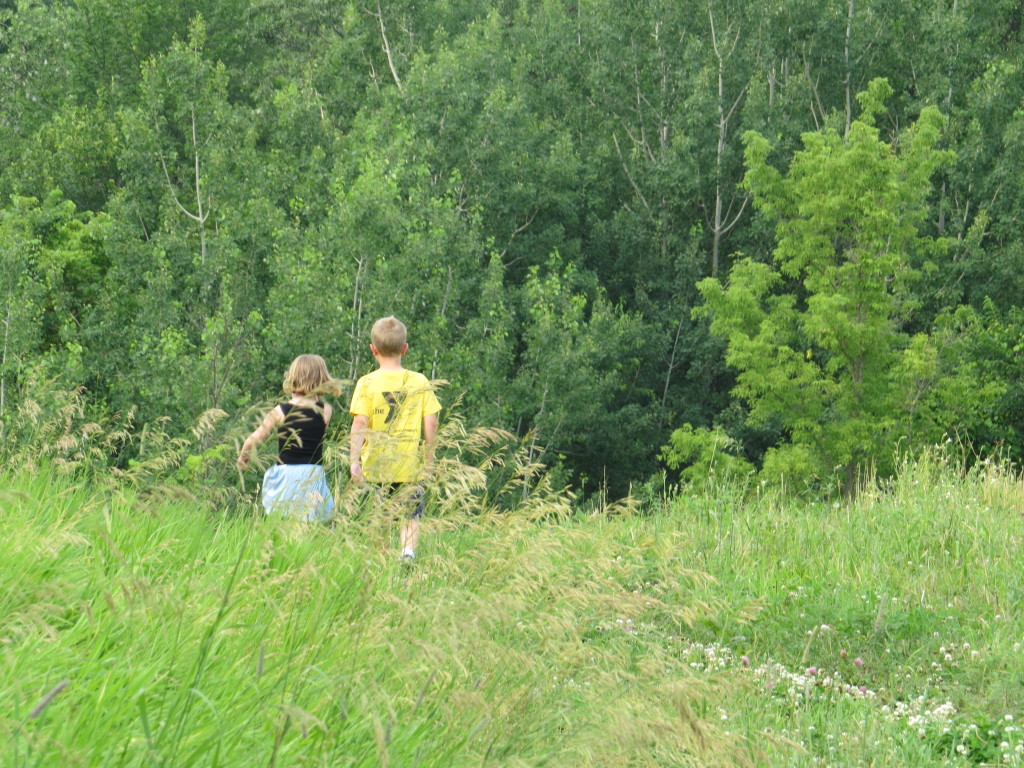 I was hoping for better photos, so I stayed for a little while. After ten minutes of observation, something incredible happened that two other birders present and myself witnessed: the Tropical Kingbird stretched out its neck, pulled its wings behind its back, and vocalized! It was a 1-second higher-pitched trill. I later listened to the sounds of TRKI on the iPod, and it was a match for the first call listed. I felt bad for all the birders that have watched and watched this bird just waiting for such a moment. Luck of the draw I guess. Just like when something even better then happened–the Kingbird flew to a low perch right on the path! Matt Stratmoen, his 600 mm lense, and I hustled down the path to get near it. We’d snap some photos, creep closer, snap, creep, snap, etc. We eventually got within 100 feet or less.
I was hoping for better photos, so I stayed for a little while. After ten minutes of observation, something incredible happened that two other birders present and myself witnessed: the Tropical Kingbird stretched out its neck, pulled its wings behind its back, and vocalized! It was a 1-second higher-pitched trill. I later listened to the sounds of TRKI on the iPod, and it was a match for the first call listed. I felt bad for all the birders that have watched and watched this bird just waiting for such a moment. Luck of the draw I guess. Just like when something even better then happened–the Kingbird flew to a low perch right on the path! Matt Stratmoen, his 600 mm lense, and I hustled down the path to get near it. We’d snap some photos, creep closer, snap, creep, snap, etc. We eventually got within 100 feet or less.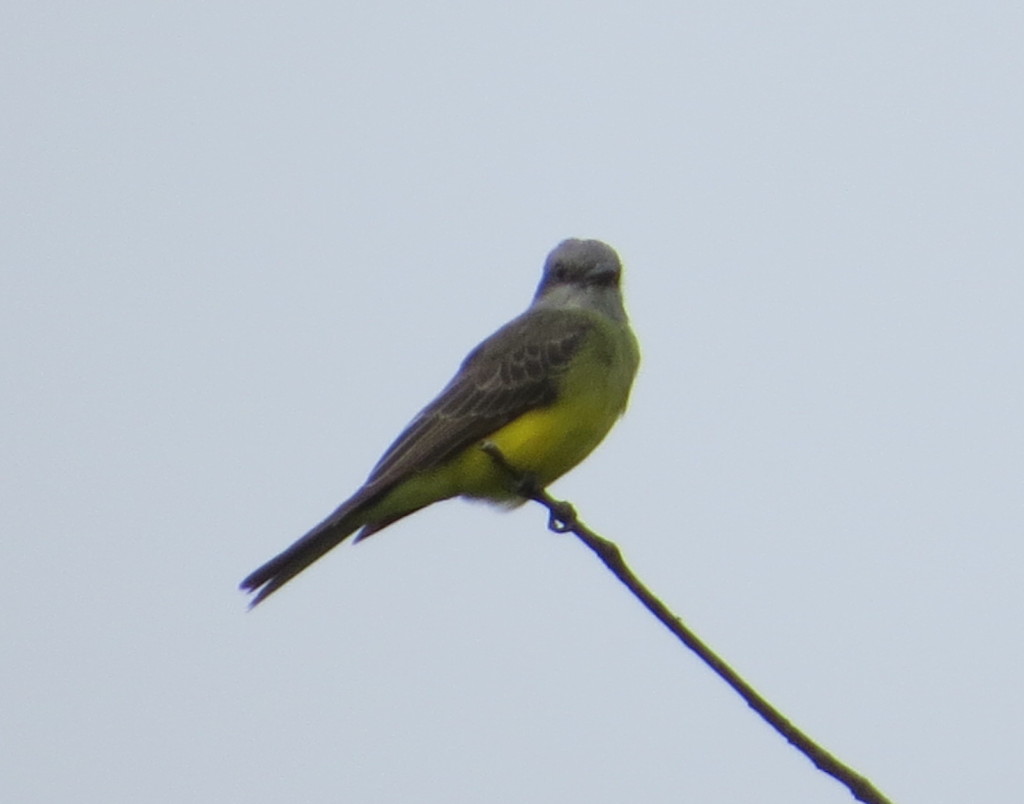 Matt is the one who took that amazing image of the Orr Black-backed Woodpeckers with the mom and dad in profile perched on either side of the nest hole with the baby sticking his head out screaming. Amazing image. It’s on
Matt is the one who took that amazing image of the Orr Black-backed Woodpeckers with the mom and dad in profile perched on either side of the nest hole with the baby sticking his head out screaming. Amazing image. It’s on 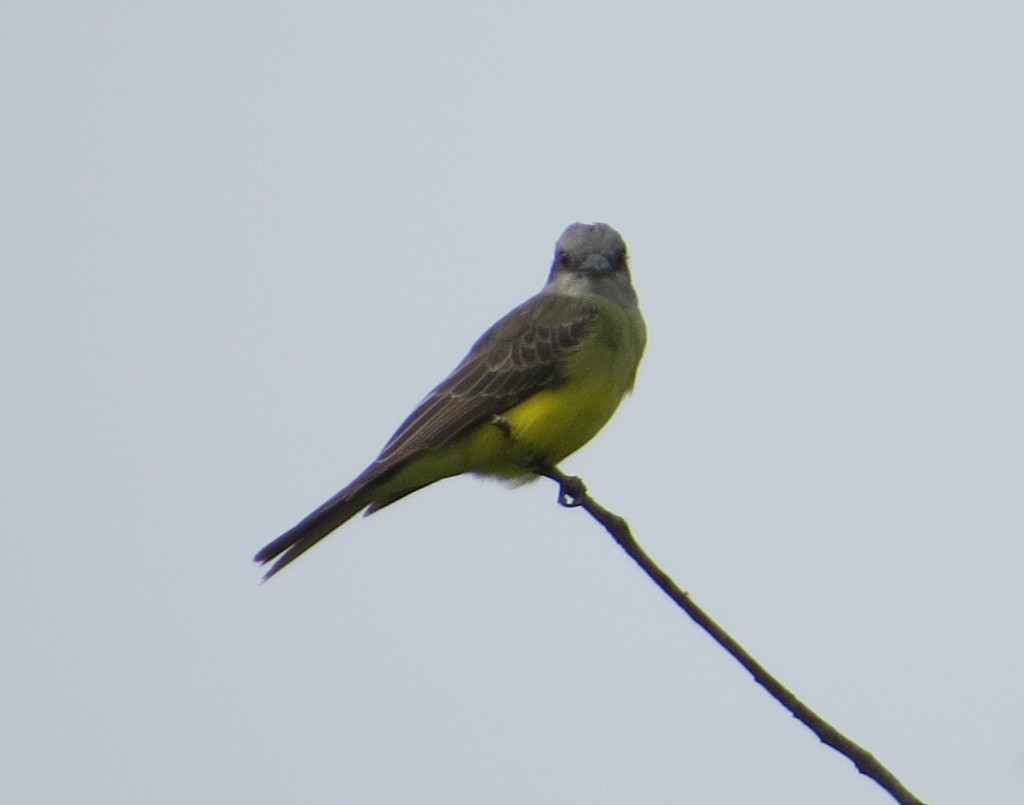 We won’t talk about the quality difference between Matt’s photos and mine of the Tropical Kingbird from the same distance. But I can live with mine. The views were phenomenal and more than I hoped for.
We won’t talk about the quality difference between Matt’s photos and mine of the Tropical Kingbird from the same distance. But I can live with mine. The views were phenomenal and more than I hoped for.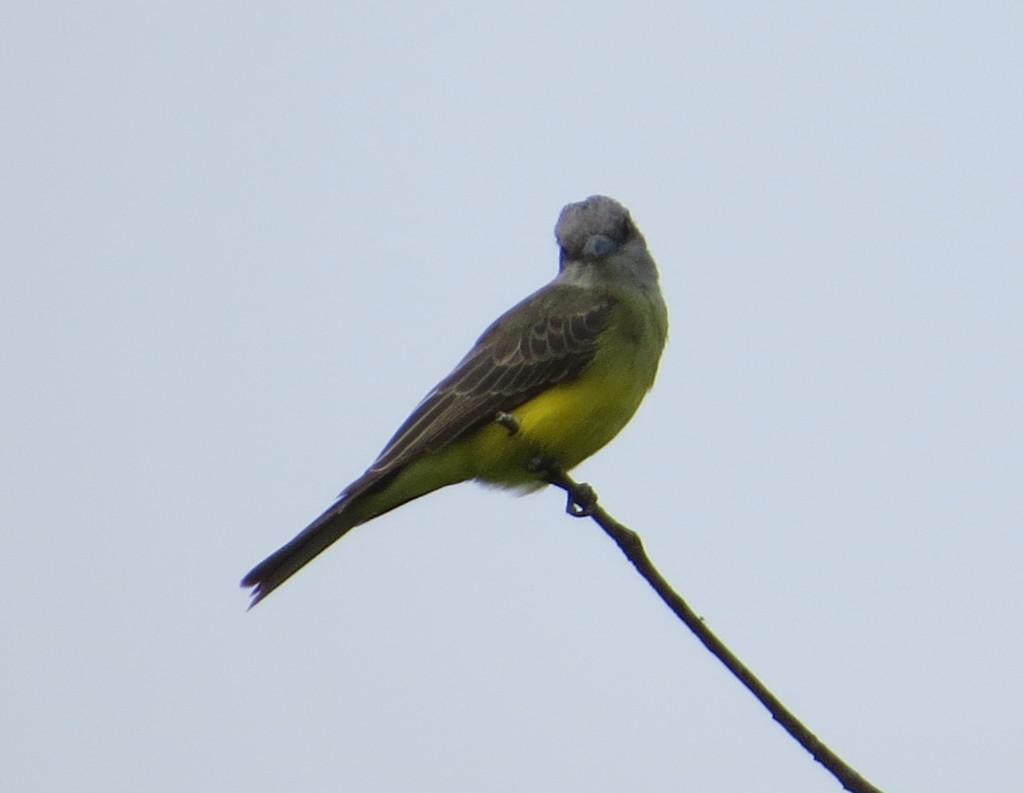
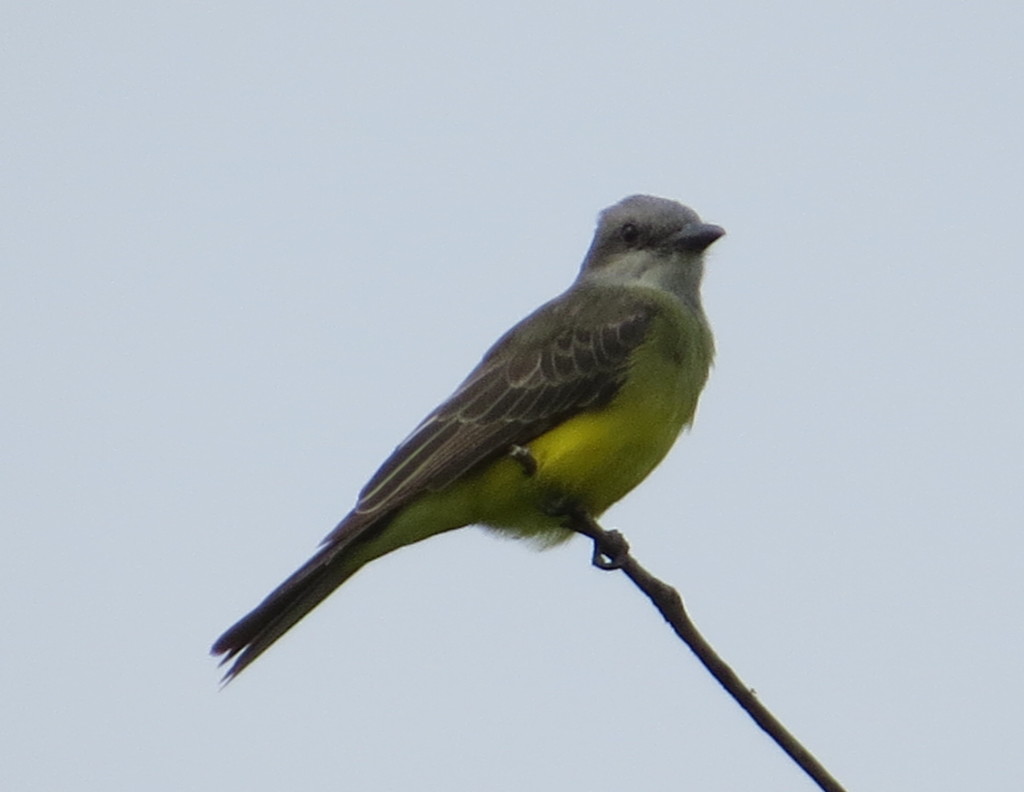 The Kingbird had enough of this low perch and went back to his tall, remote Cottonwood. I got what I came for and then some, so I hustled back to the van after just a half hour of observation. After all, Swedish meatballs and a fight loading Ikea furniture in the van were calling my name.
The Kingbird had enough of this low perch and went back to his tall, remote Cottonwood. I got what I came for and then some, so I hustled back to the van after just a half hour of observation. After all, Swedish meatballs and a fight loading Ikea furniture in the van were calling my name.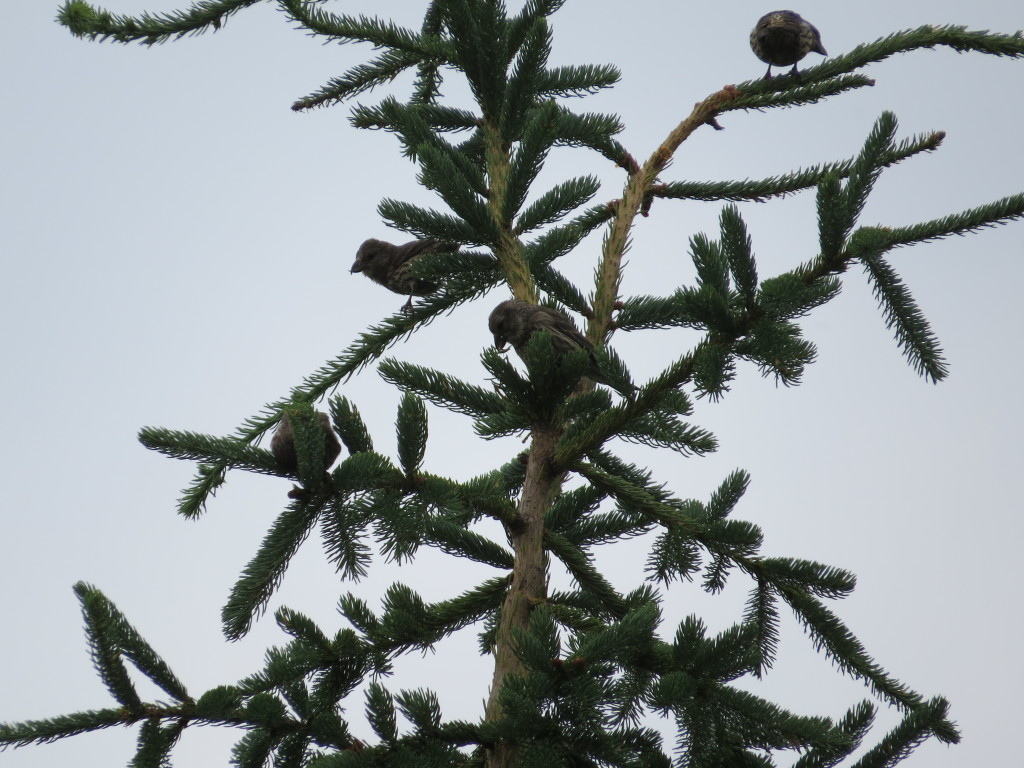
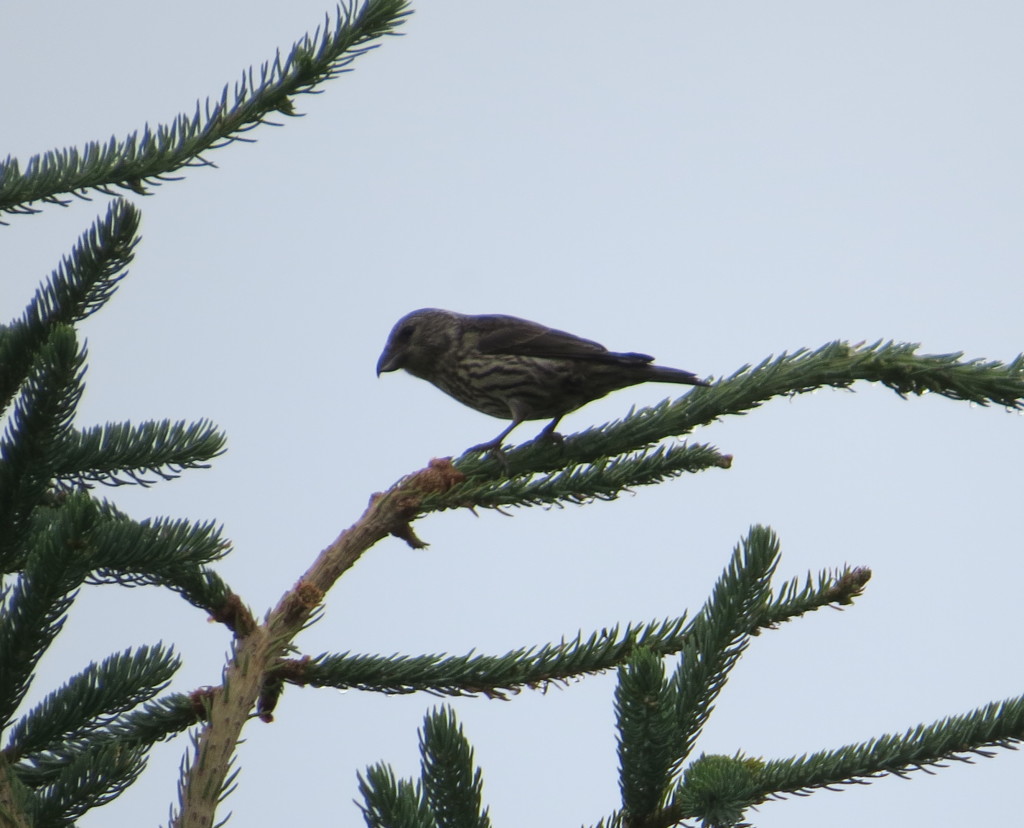
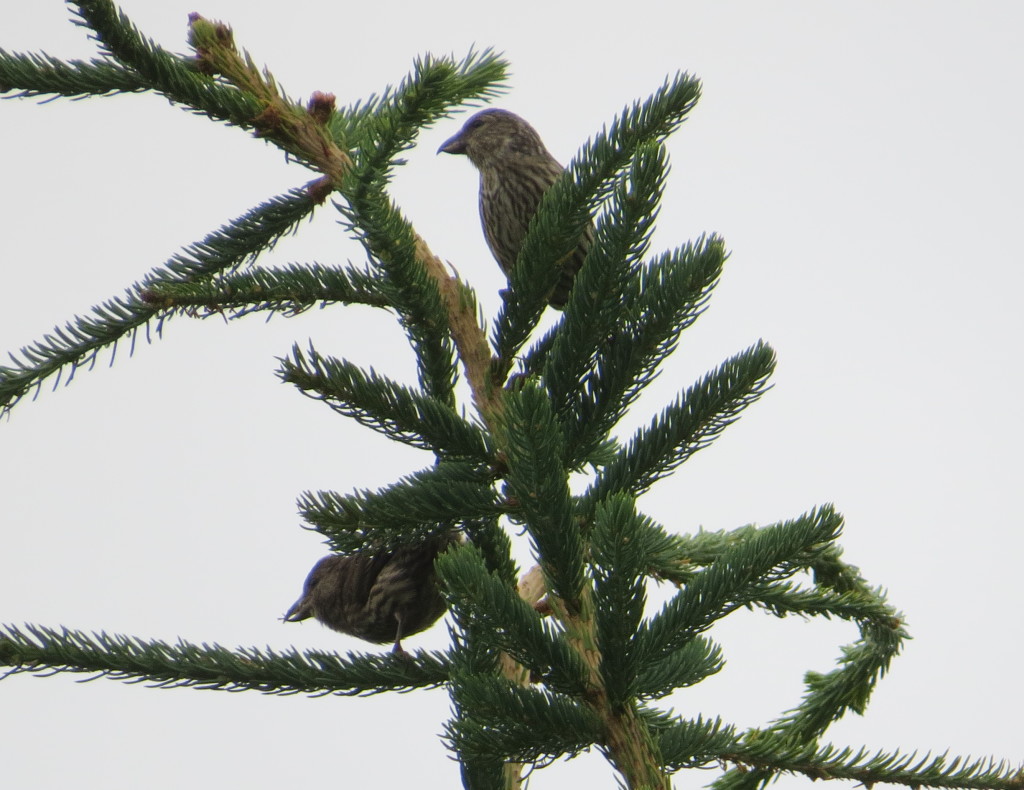
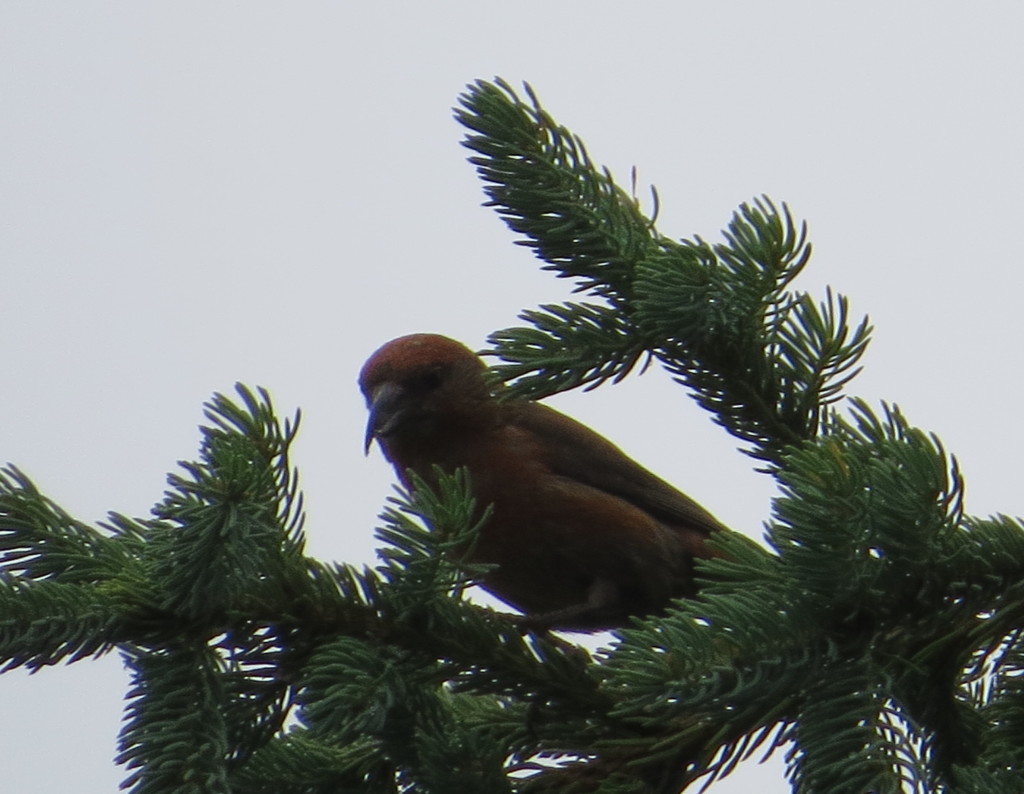 Check out this sequence. Looks tasty…
Check out this sequence. Looks tasty…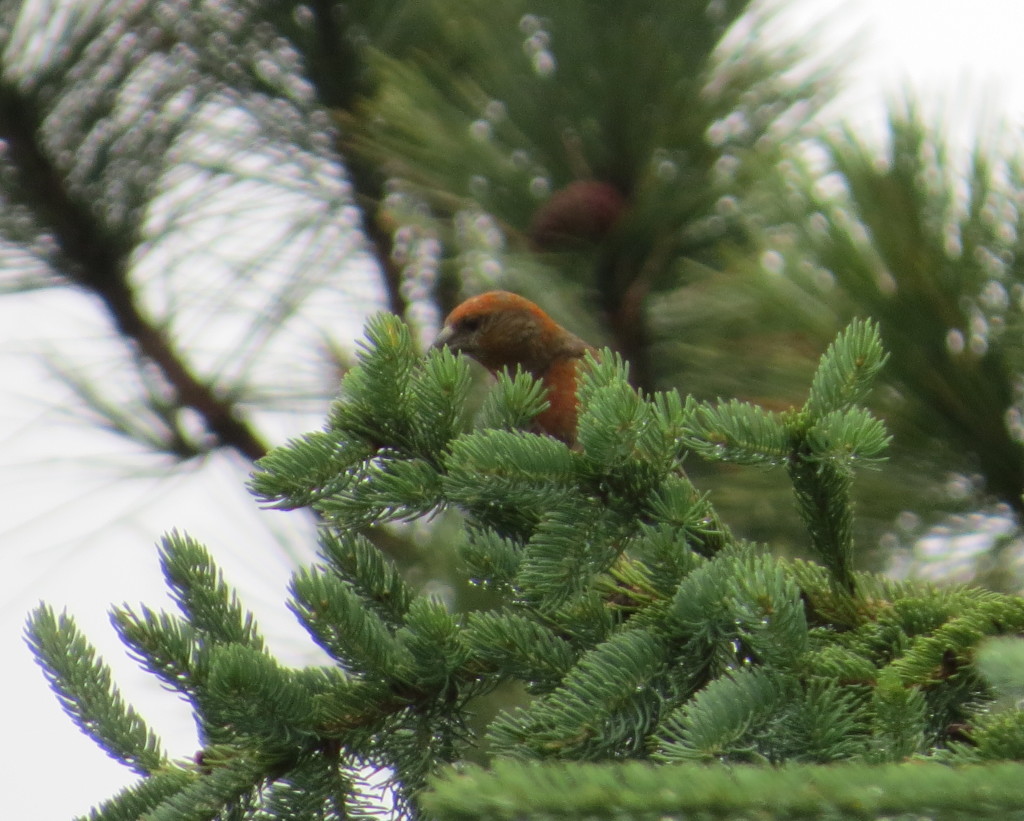 A little snip and…
A little snip and…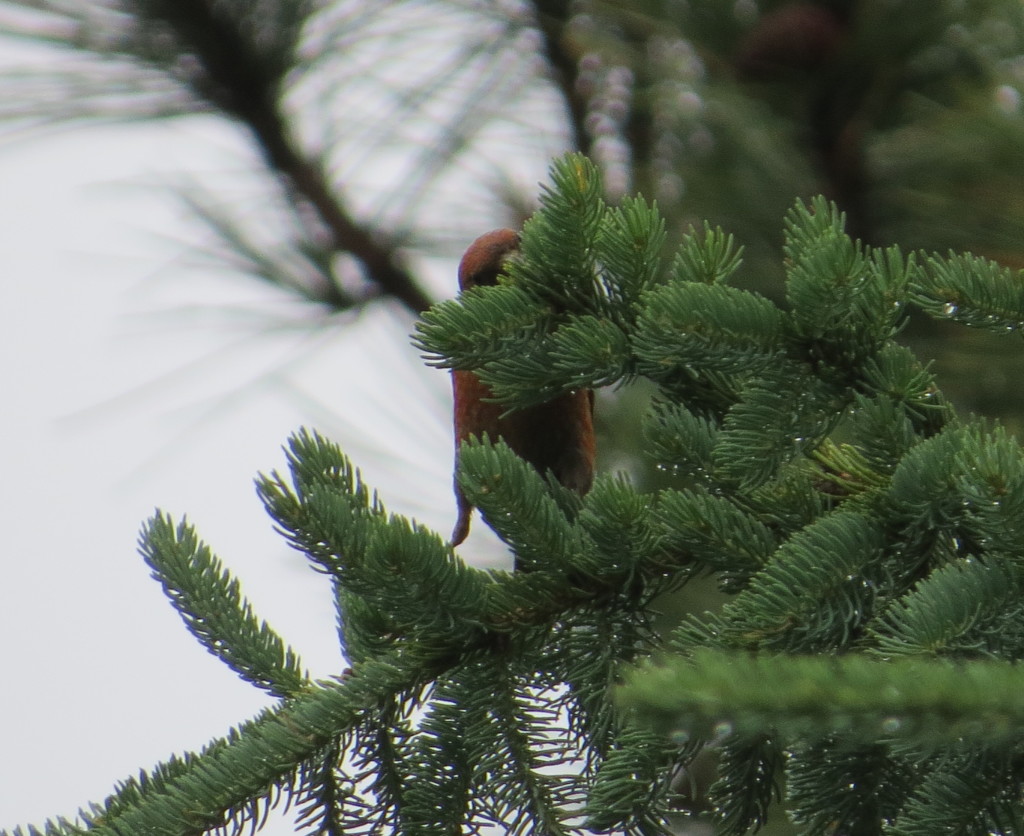 Voilà!
Voilà!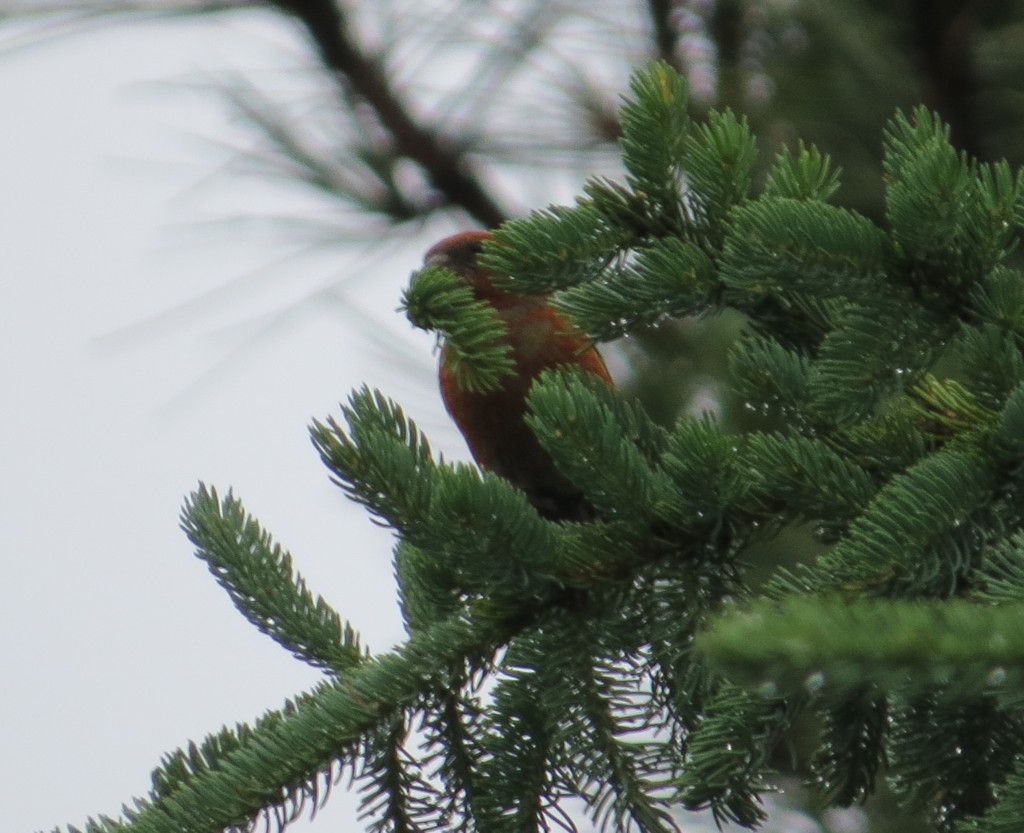 Dad and Evan did get out to see the birds. Evan saw the flock and said, “Yep, I see them,” and then went back into the house. As usual, I wanted good looks and good photographs. I was planning to keep working until I got some I was happy with, but poof! The nomads took off for their next stop on their life’s journey never to be seen by us again.
Dad and Evan did get out to see the birds. Evan saw the flock and said, “Yep, I see them,” and then went back into the house. As usual, I wanted good looks and good photographs. I was planning to keep working until I got some I was happy with, but poof! The nomads took off for their next stop on their life’s journey never to be seen by us again. 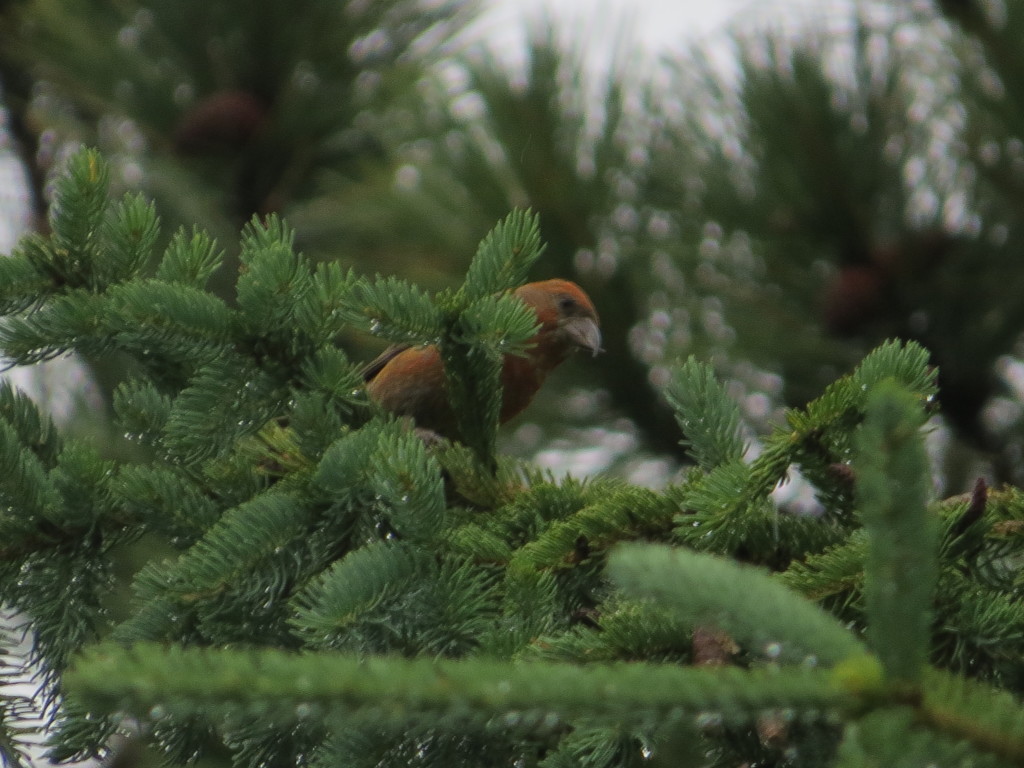 What a thrill it was to get this life bird. Each new life bird now is especially fun because they are such good birds at this point proven by the fact that we still haven’t seen some of them after several years of birding. Red Crossbills in particular are tough birds to get in Minnesota even though they are year-round residents here. Not only was it a treat to finally see a Red Crossbill, but a three-generation lifer in the YARD is completely unheard of at this stage in the game. I still can’t believe the serendipity of this encounter. Absolutely awesome, absolutely hands-down the best bird of this trip North. A Red Crossbill lifer and a Black-backed Woodpecker lifer seen within the same week at this time of year–unbelievable. I thought I was going to have to wait for next winter to take another crack at those two.
What a thrill it was to get this life bird. Each new life bird now is especially fun because they are such good birds at this point proven by the fact that we still haven’t seen some of them after several years of birding. Red Crossbills in particular are tough birds to get in Minnesota even though they are year-round residents here. Not only was it a treat to finally see a Red Crossbill, but a three-generation lifer in the YARD is completely unheard of at this stage in the game. I still can’t believe the serendipity of this encounter. Absolutely awesome, absolutely hands-down the best bird of this trip North. A Red Crossbill lifer and a Black-backed Woodpecker lifer seen within the same week at this time of year–unbelievable. I thought I was going to have to wait for next winter to take another crack at those two. Northern Minnesota is home. Every season offers up something special in terms of wildlife and scenery. I was able to get out and do some birding in the forests, bogs, and open country on the same recent trip that included the Blackburnian Warbler. Cool stuff abounds everywhere here. It was good to be home.
Northern Minnesota is home. Every season offers up something special in terms of wildlife and scenery. I was able to get out and do some birding in the forests, bogs, and open country on the same recent trip that included the Blackburnian Warbler. Cool stuff abounds everywhere here. It was good to be home.
 Judging from my picture, it appears that this was a family group with a couple fledglings! This Chickadee is so cool. Most MN birders only see them in the dead of winter when they come out to the remote feeding station on Admiral Road in the Sax-Zim Bog. I was very pleased to see BOCH in the summer and much closer to home than SZ.
Judging from my picture, it appears that this was a family group with a couple fledglings! This Chickadee is so cool. Most MN birders only see them in the dead of winter when they come out to the remote feeding station on Admiral Road in the Sax-Zim Bog. I was very pleased to see BOCH in the summer and much closer to home than SZ.
 Another fun bird to see even if it couldn’t be seen well was the Lincoln’s Sparrow.
Another fun bird to see even if it couldn’t be seen well was the Lincoln’s Sparrow. The varied habitats in northern MN offer up some unique opportunities for viewing wildlife. While looking for an American Bittern lifer in a marsh near my parents’ house, I found this gal looking for a place to lay her eggs.
The varied habitats in northern MN offer up some unique opportunities for viewing wildlife. While looking for an American Bittern lifer in a marsh near my parents’ house, I found this gal looking for a place to lay her eggs. It was not the biggest Snapper I’ve seen. This one’s shell was the size of a dinner plate. I’ve seen them twice as big before.
It was not the biggest Snapper I’ve seen. This one’s shell was the size of a dinner plate. I’ve seen them twice as big before. I didn’t spend a lot of time in the mature, upland woods other than just passing through. That was enough to nab my FOY Blue-headed Vireo that I missed during migration.
I didn’t spend a lot of time in the mature, upland woods other than just passing through. That was enough to nab my FOY Blue-headed Vireo that I missed during migration. This bird has never been good to me. It was once a nemesis and continues to be a photographic nemesis. By the time I figured out its rhythm of jumping to a new perch each time after it sang, the bird disappeared from sight.
This bird has never been good to me. It was once a nemesis and continues to be a photographic nemesis. By the time I figured out its rhythm of jumping to a new perch each time after it sang, the bird disappeared from sight.
 Also found in an open area was a bird that I have seen so many times this year and never before in the Northland, the Brown Thrasher.
Also found in an open area was a bird that I have seen so many times this year and never before in the Northland, the Brown Thrasher. One bird that favors the open grassy fields that intersperse the Northwoods are the showy, and unique-sounding Bobolinks. They must be having a good year because I saw so many.
One bird that favors the open grassy fields that intersperse the Northwoods are the showy, and unique-sounding Bobolinks. They must be having a good year because I saw so many.


 One bird that I was absolutely surprised to find in the open fields were Brewer’s Blackbirds! I had no idea they were in the area. Honestly, I often just dismiss most blackbirds I see as Red-winged Blackbirds or Common Grackles. Needless to say I was pleasantly surprised when I saw the Brewer’s. Like the Bobolink, it was nice to finally be able to get some decent photos of this bird too.
One bird that I was absolutely surprised to find in the open fields were Brewer’s Blackbirds! I had no idea they were in the area. Honestly, I often just dismiss most blackbirds I see as Red-winged Blackbirds or Common Grackles. Needless to say I was pleasantly surprised when I saw the Brewer’s. Like the Bobolink, it was nice to finally be able to get some decent photos of this bird too.



 I had some really fun birding on this trip up north. I was not lifer hunting as there really are so few lifers I can still get. And none of them are easy. Or so I thought. In the next post I’ll tell you about a three-generation lifer that was delivered right to the doorstep.
I had some really fun birding on this trip up north. I was not lifer hunting as there really are so few lifers I can still get. And none of them are easy. Or so I thought. In the next post I’ll tell you about a three-generation lifer that was delivered right to the doorstep.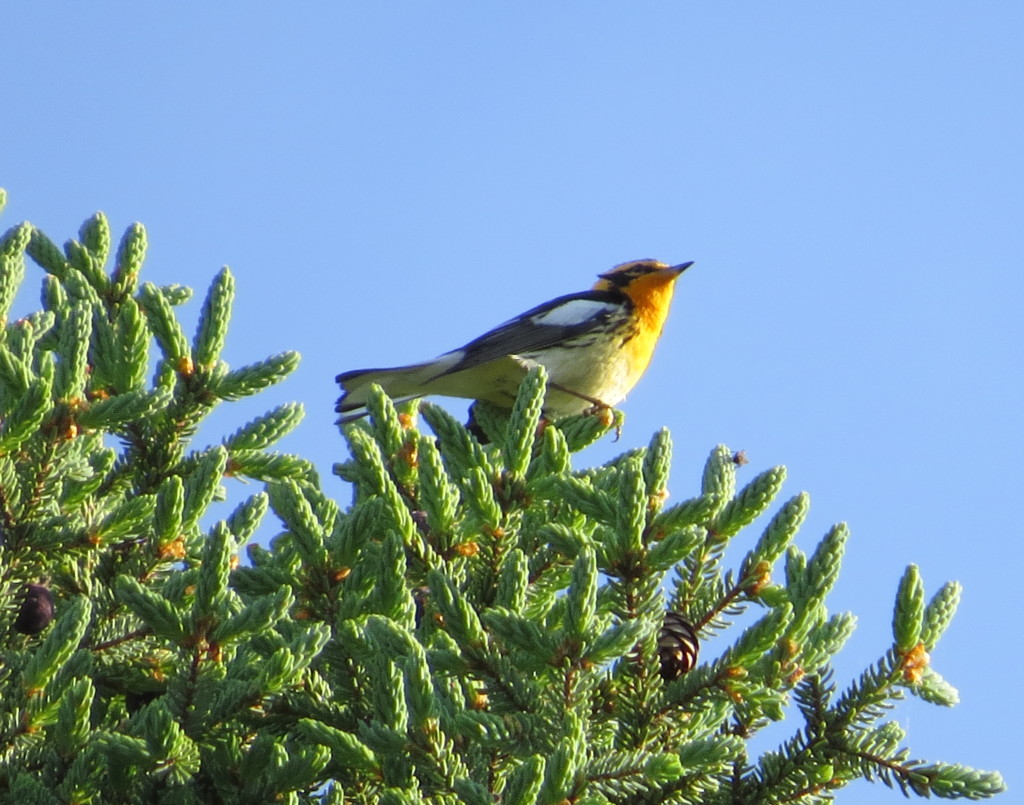
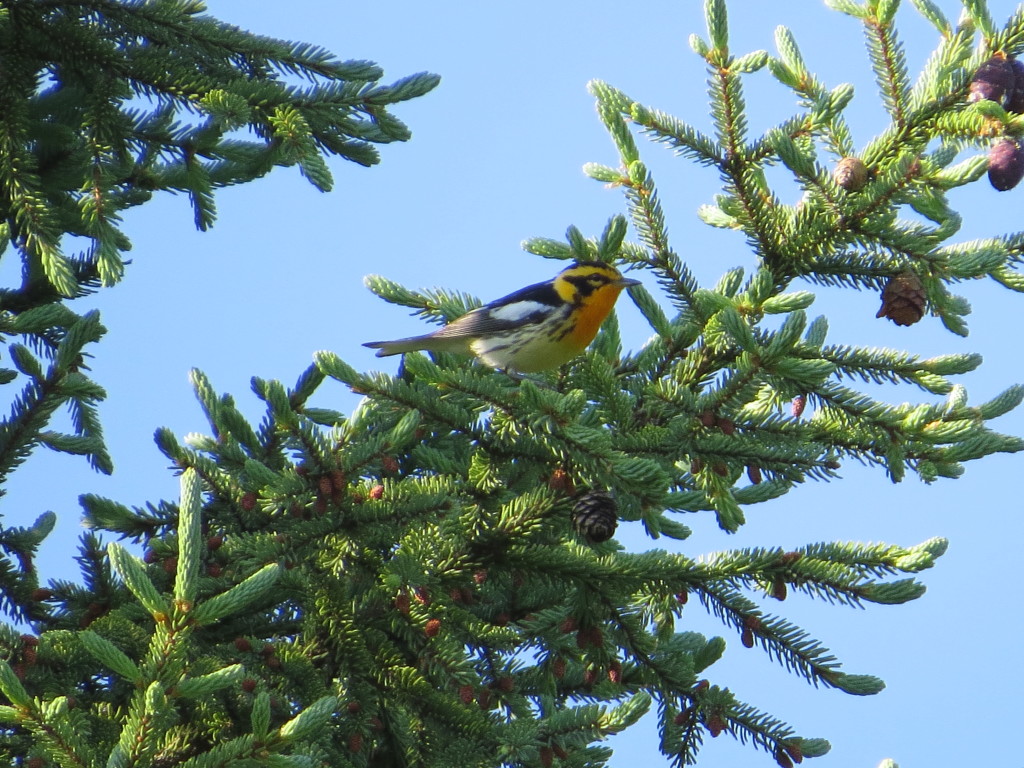
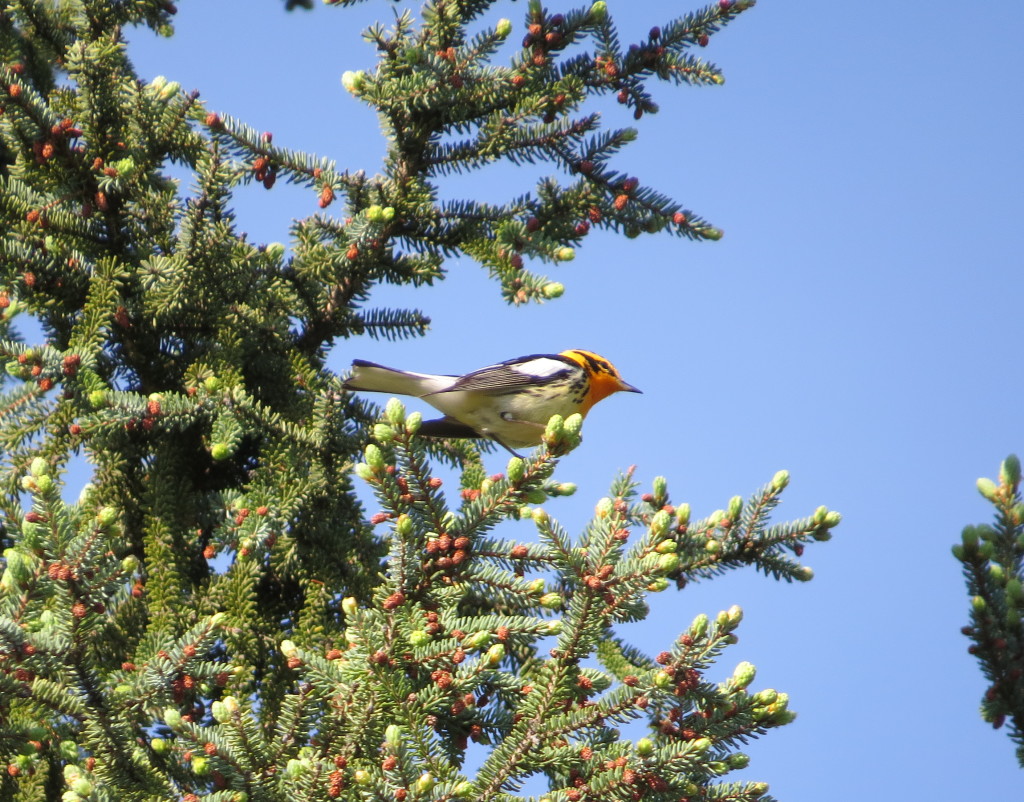
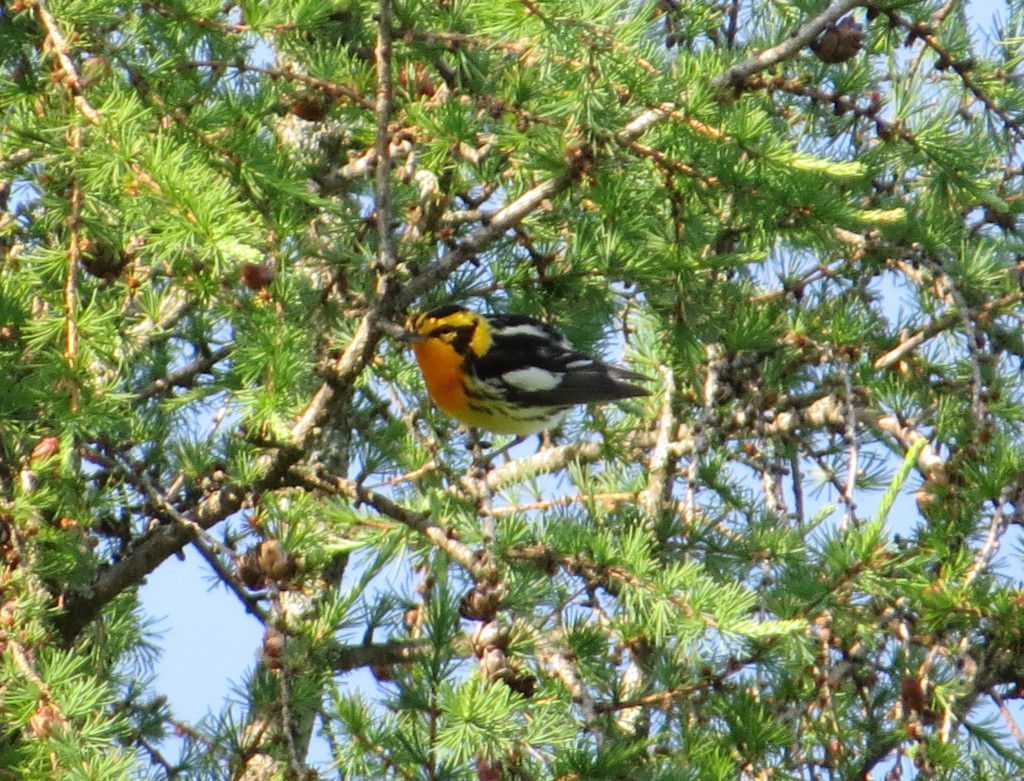
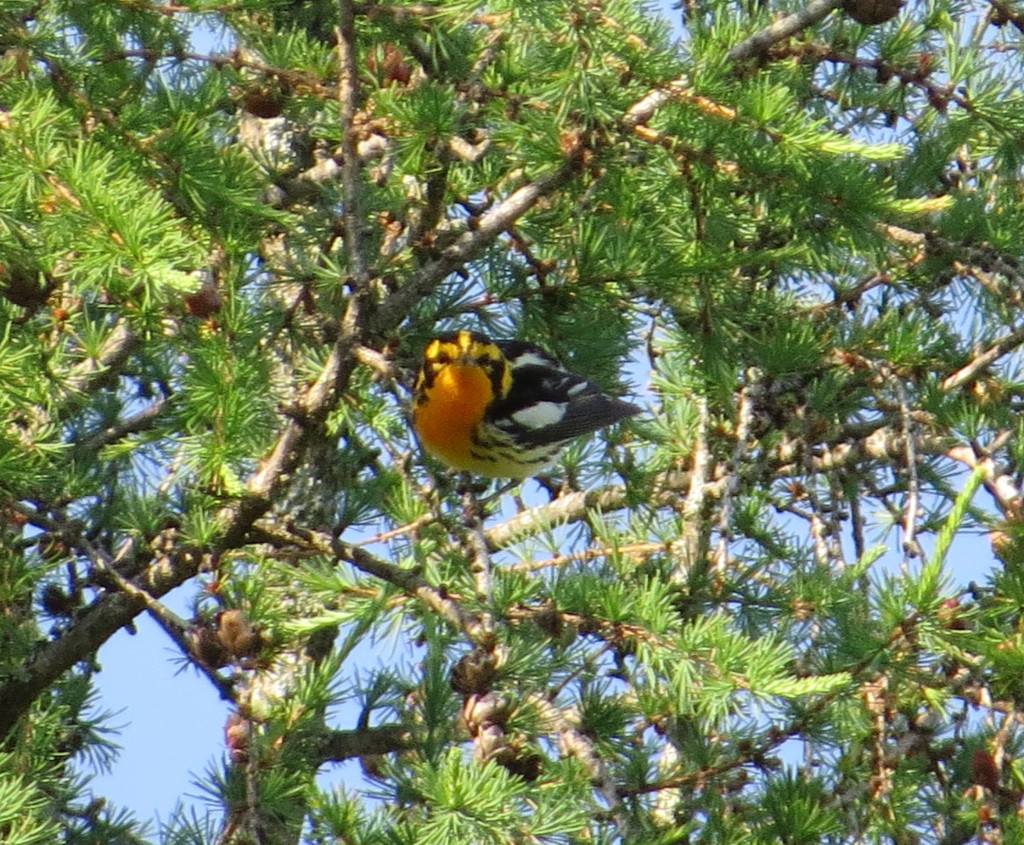
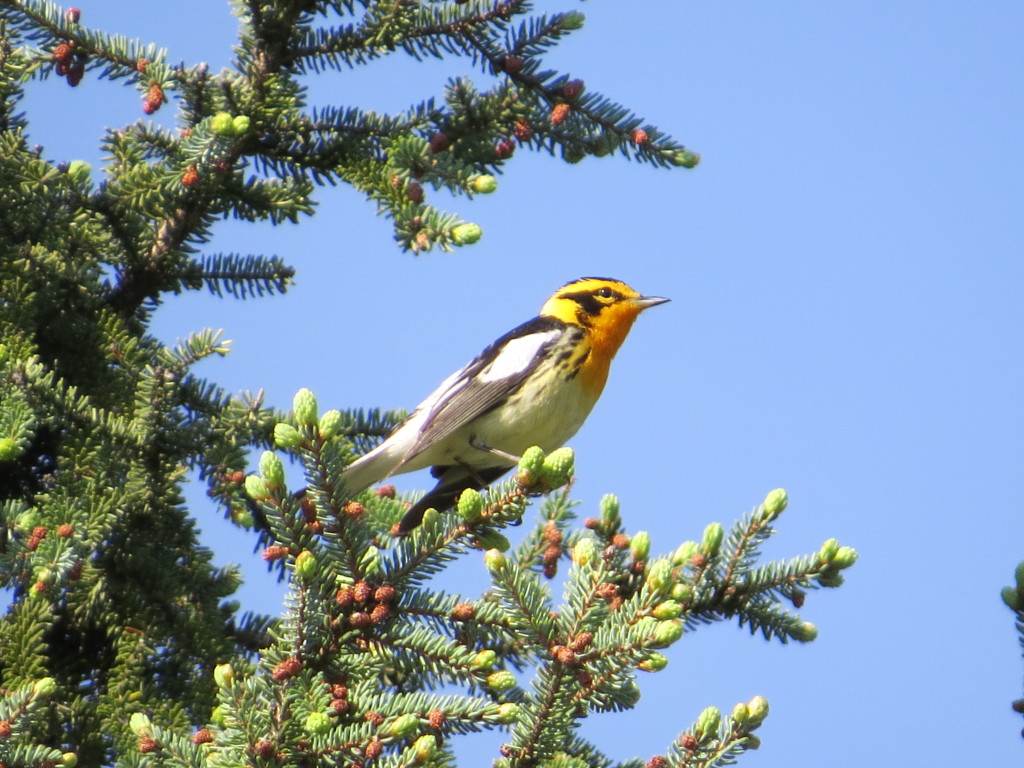
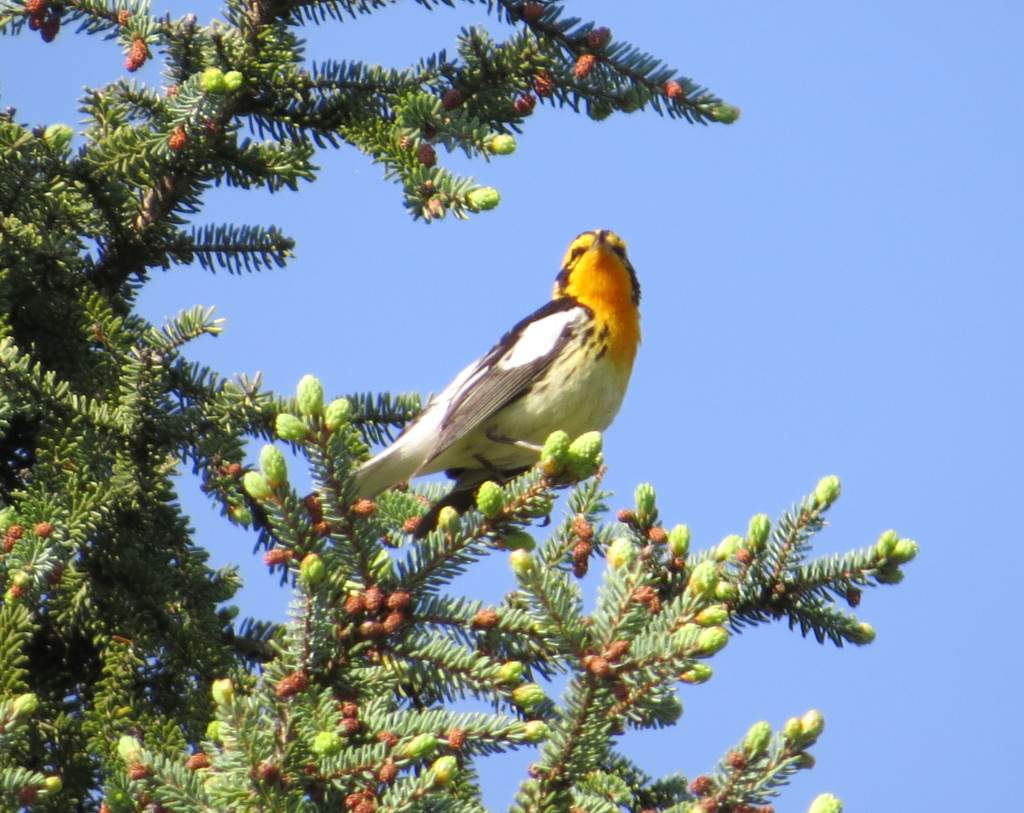
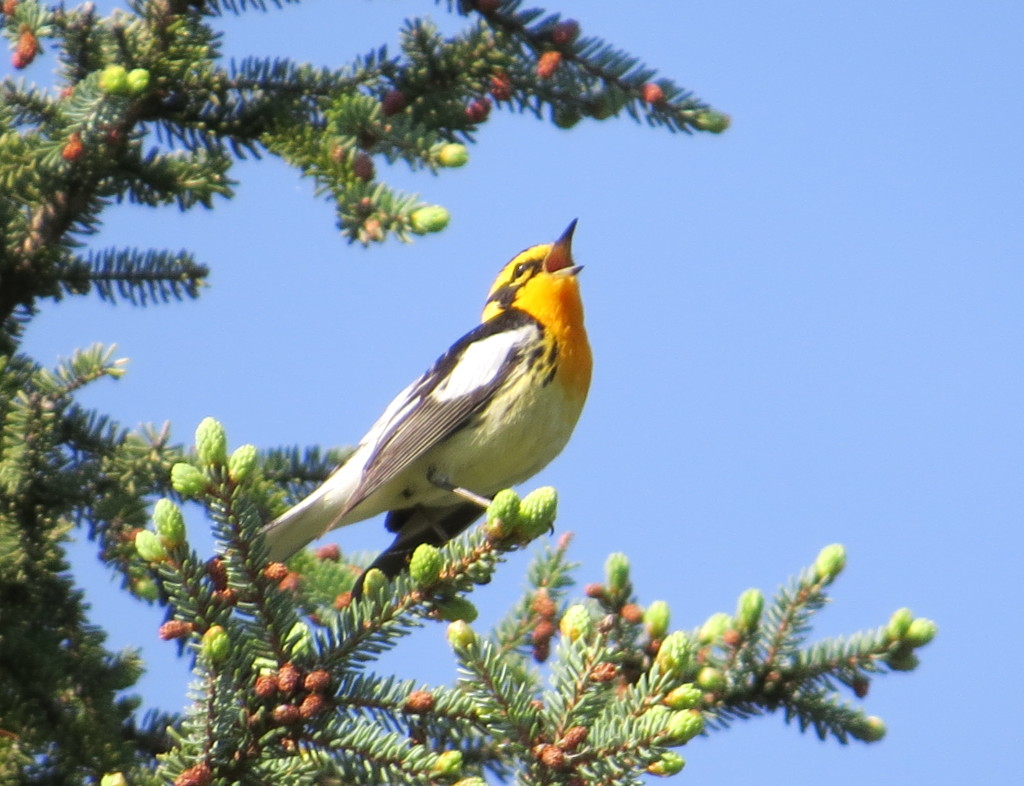
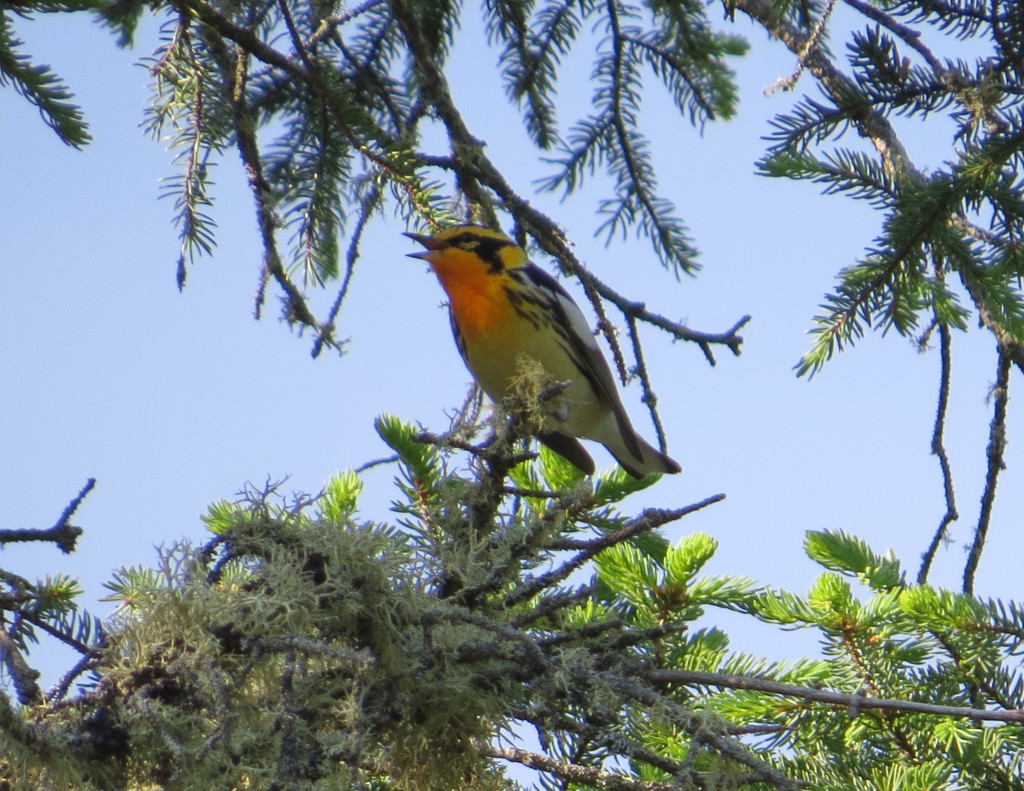
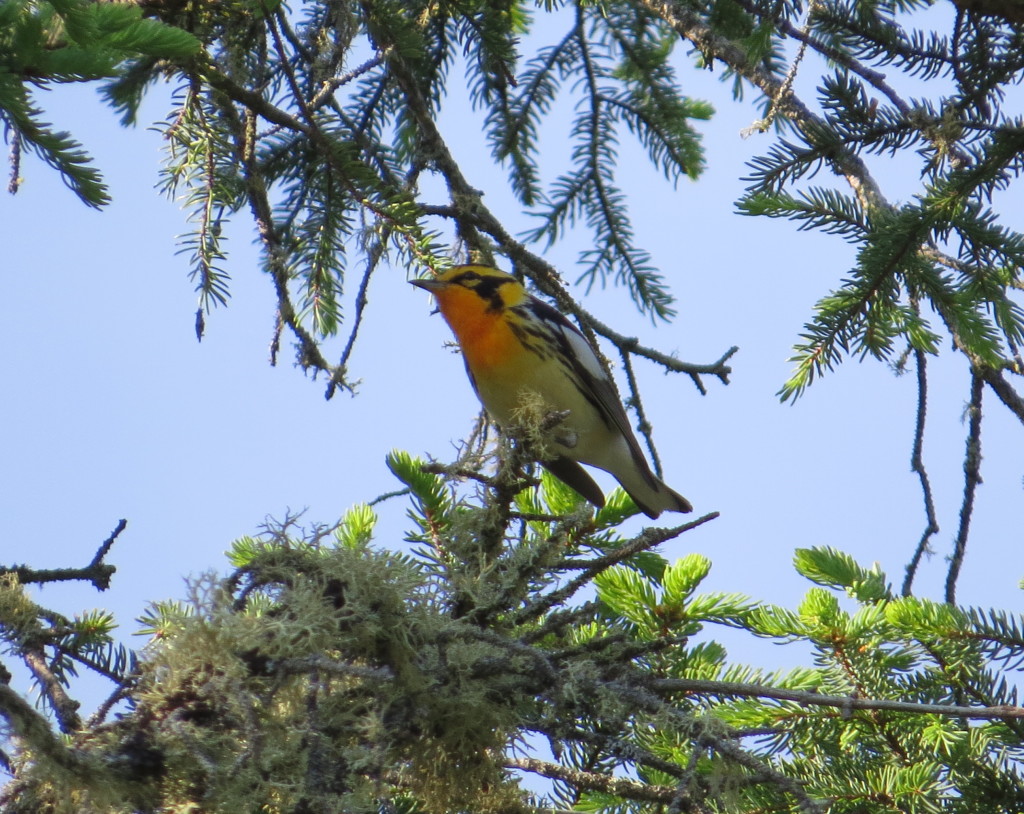
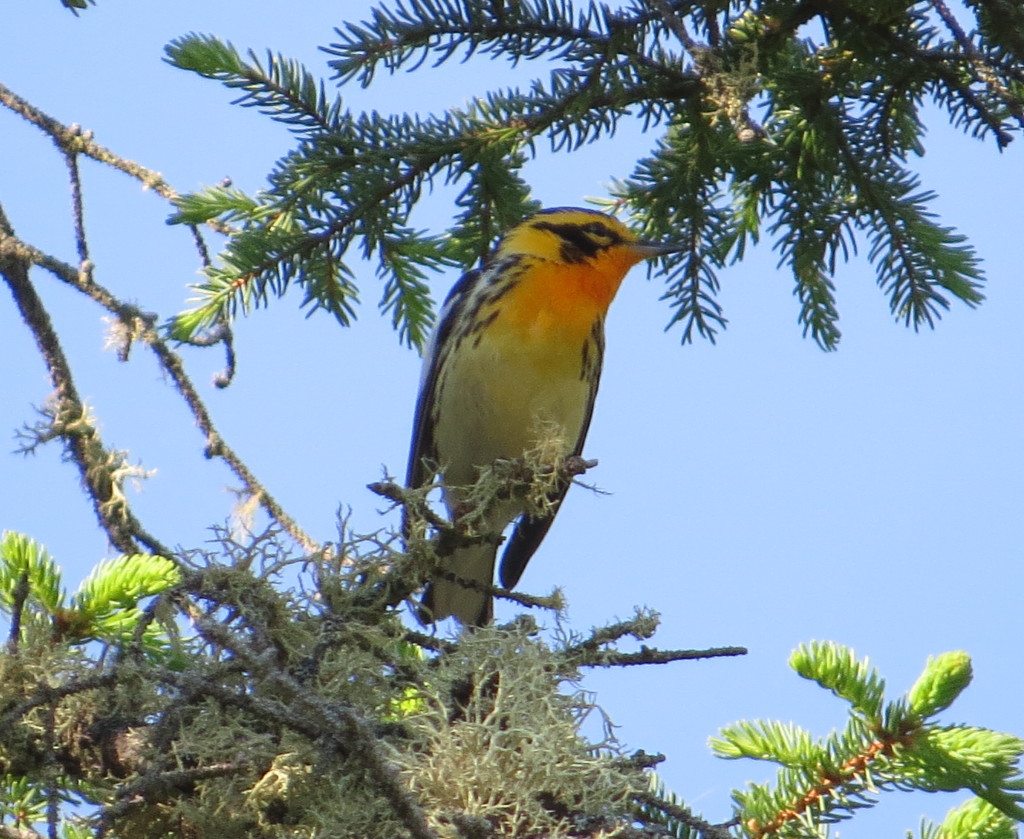
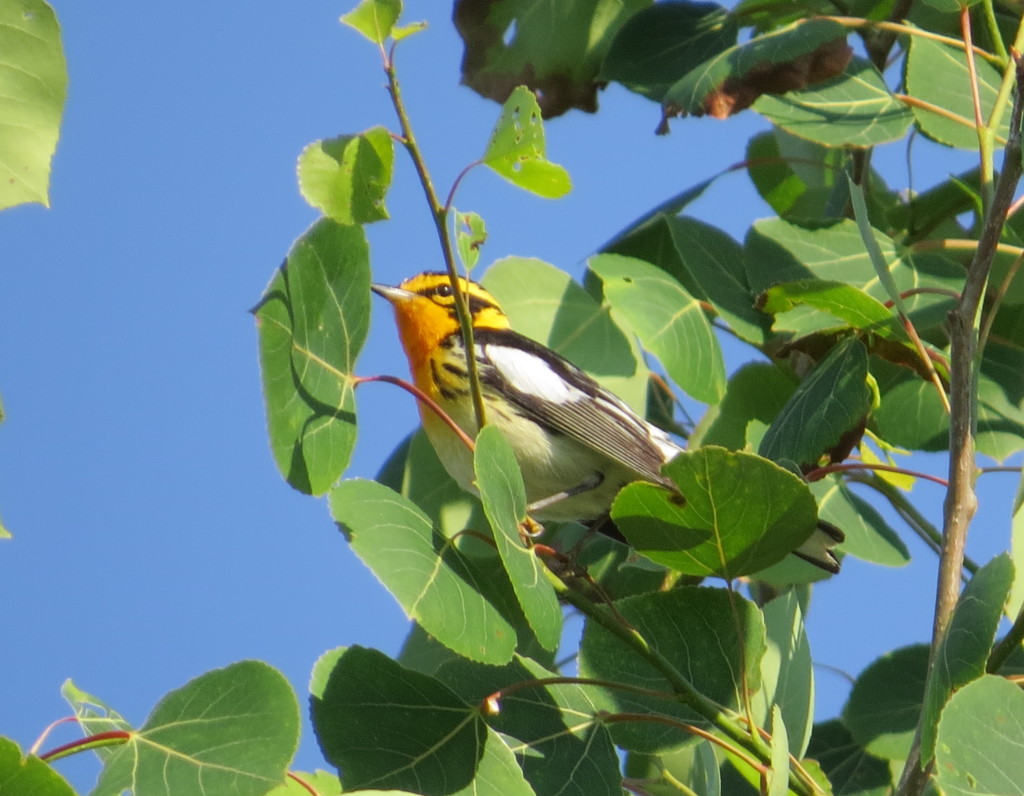
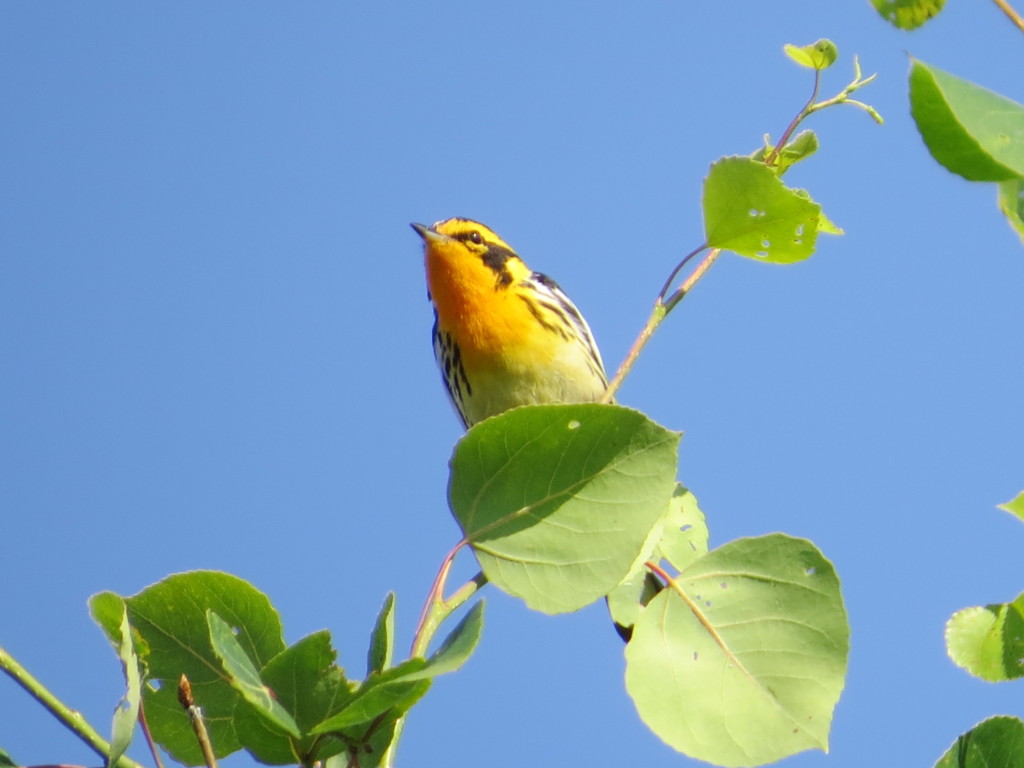
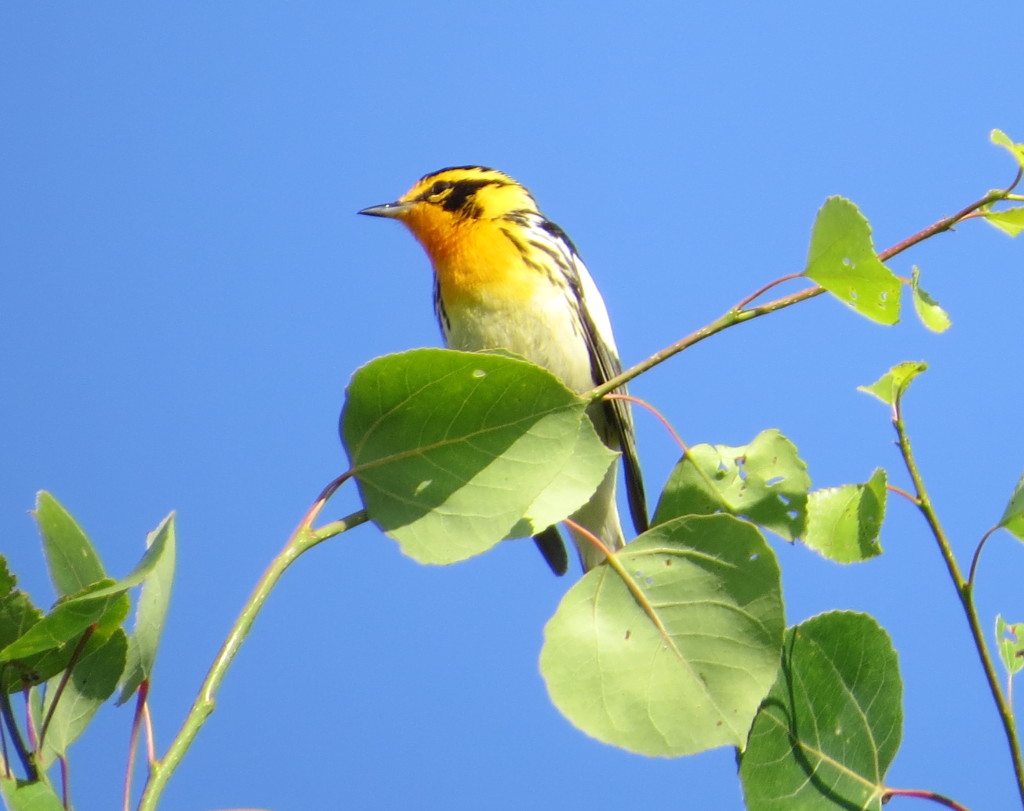
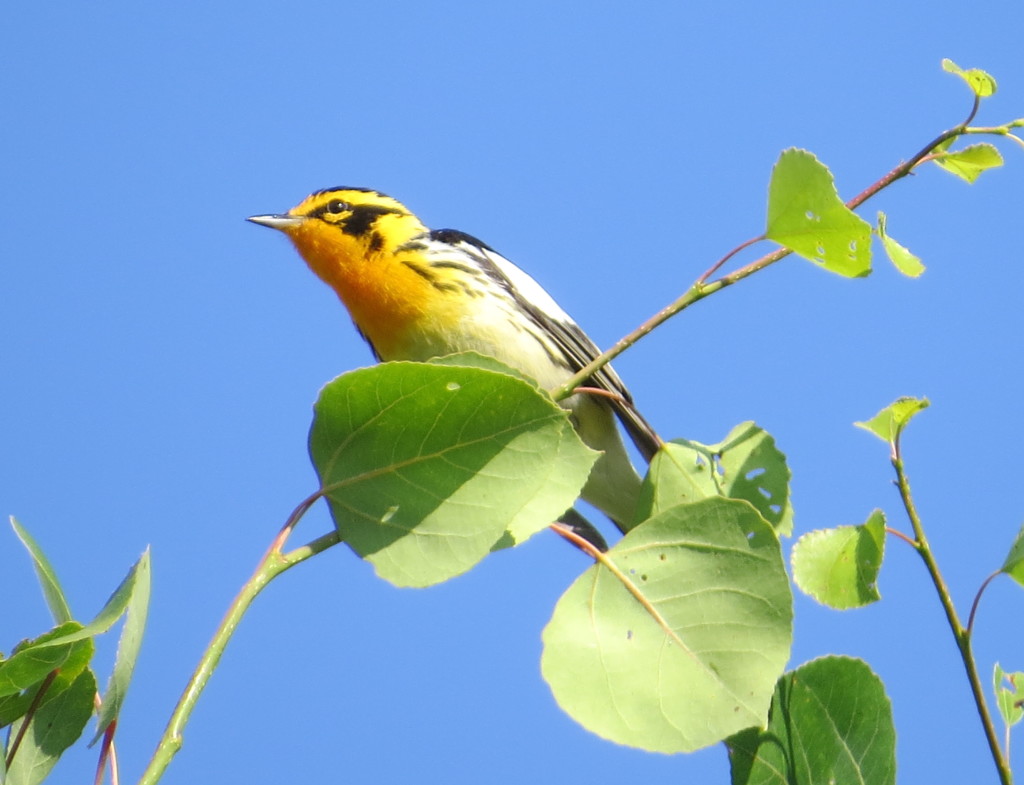
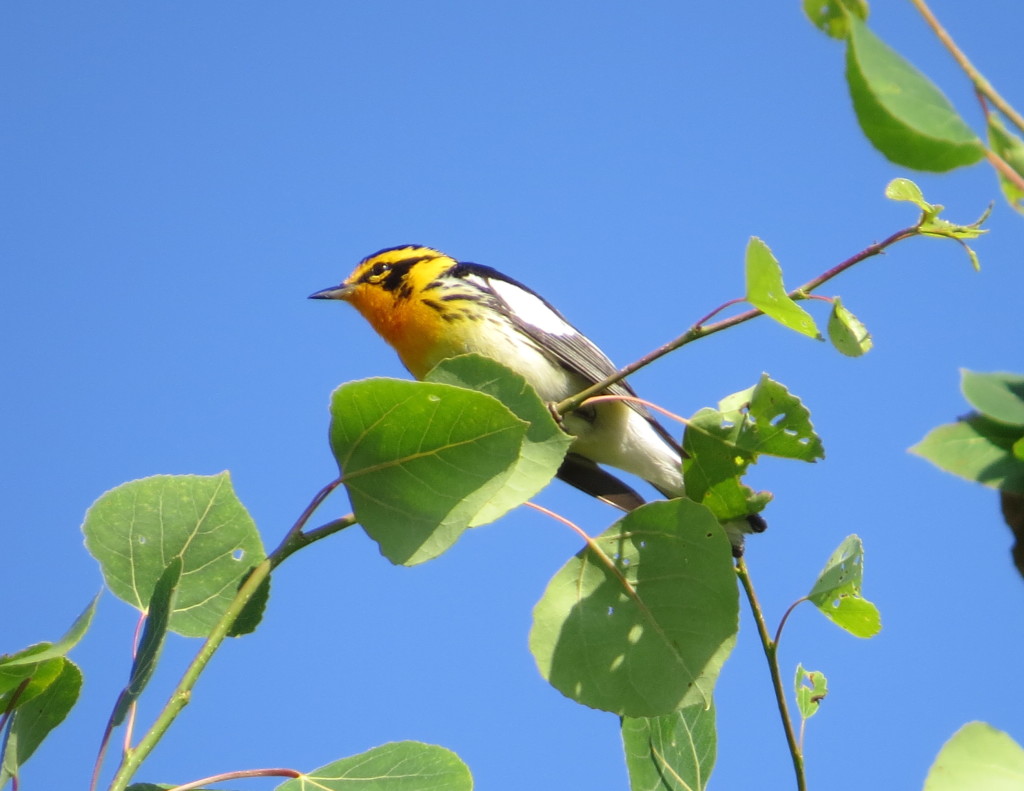
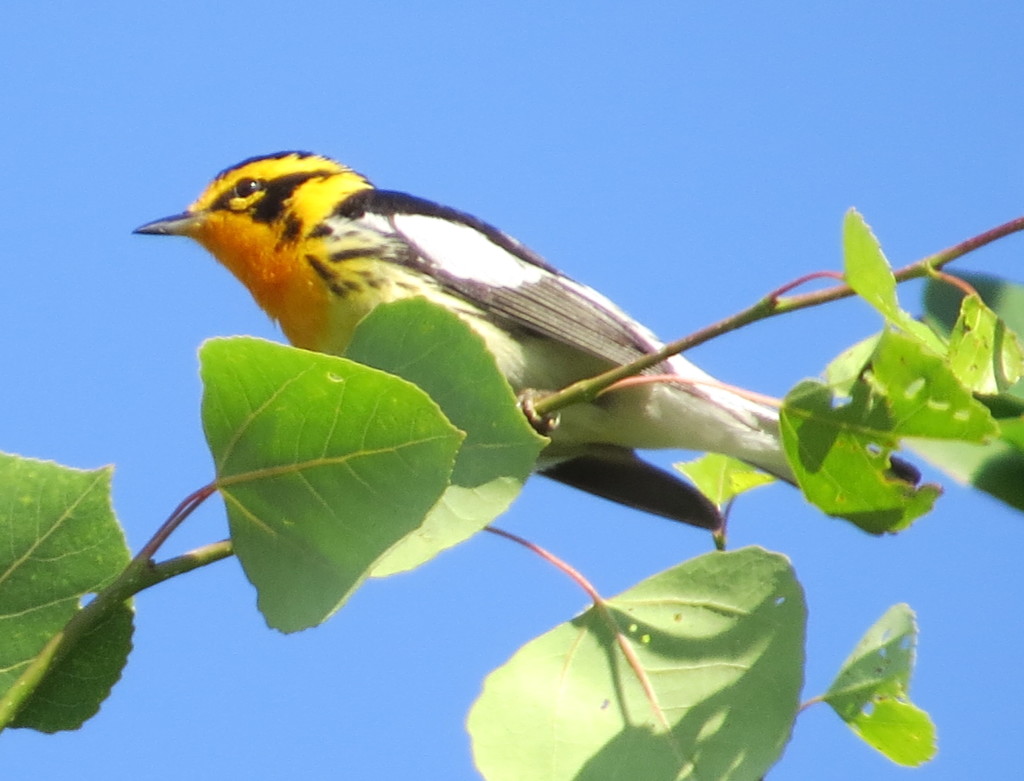 Overkill? Maybe, but my burning desire to photograph one of my top birds has finally been extinguished….until I find another one.
Overkill? Maybe, but my burning desire to photograph one of my top birds has finally been extinguished….until I find another one.